The longest conflict of the cold war
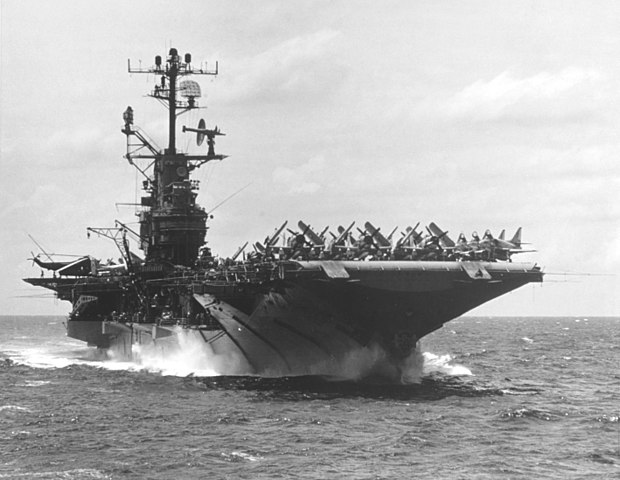
USS Intrepid, south China sea 1965
The war in south-east Asia was indeed the longest war of the Century. It started in 1945 as a war of independence for the Vietnamese people against French colonial rule, embedded in the context of resistance to the Japanese, and as the spectre of communism became a priority for a US-backed UN, after Korea, Indochina became the hot point in the region, with other independence wars erupted around, what was called the post-colonial era. With US-backed South Vietnam, a new war started, which will take traction and spread in neighbours as the war progressed until the fall of Saigon in 1975, and the Cambodian war ending that year and the Sino-Vietnamese war of 1879 closing for this region almost thirty-four years of continuous regional conflicts. Scars are not completely faded yet. A traumatic experience for US Troops, it also concerned the US Navy a great deal, due to the nature of operations, which commitment was more than ten years long, with a large part of US Navy ships doing their “tour of duty” there, plus many converted for specific uses and many others built for riverine warfare.
Prologue: The French Indochina naval operations (1945-55)
The elimination of what left of the Indochina squadron (distinguished at the battle of Ko Chang in 1941) was acted in March 1945, as Japan launched the Second French Indochina Campaign ousting the Vichy Regime governor and install formally Emperor Bảo Đại as head of a new “independent” Empire of Vietnam. Most French officials and officers remaining were rounded up and jailed, while all garrisons were assaulted. This also liquidated what was left of the French Indochina squadron there.
As soon as France was back in control with new elections programmed and a provisional government, calls to intervene in the far east multiplied. Actually, several Free French ships were already there, with the British east asia fleet, notably the mighty Richelieu, participating in the campaign of Burma and Malaya. At first FDR and US authorities resisted a return of the French in the region, and it was even suggested that Chiang Kai-shek could place Indochina under Chinese rule. This was never acted. Instead, the French Provisional Government wanted to restore its colonial rule in French Indochina, seen as the final step in the Liberation of France rapidly sent troops in coordination with the British, a position difficult to understand for Joseph Stilwell.
Peace was signed onboard Missouri by General Leclerc on behalf of France, and French troops landed on 13 September (part of a Franco-British task force also landed in Java) in Saigon to restore French authority and deal with Japanese troops remaining across Indochina, unaware of the peace, disarmed and registered to be repatriated in Japan. Meanwhile, Hồ Chí Minh openly courted US officials to be granted a leading position in post-war Indochina, still not communist and rather grounding his rhetoric on Wilson’s nations rights (a position he held since 1919) even taking entire parts of the constitution he wrote. OSS agents already in contact with Indochinese resistance during the war, were pressing US authorities to make a move. Sadly, nothing was done until October 9, 1945, when General Leclerc arrived in Saigon accompanied by Colonel Massu’s March Group in order to secure Saigon and the surroundings and militarize the Tonkin. He also had to negociate with the Viet-Minh and to return to French control the Chinese-occupied Hanoi.
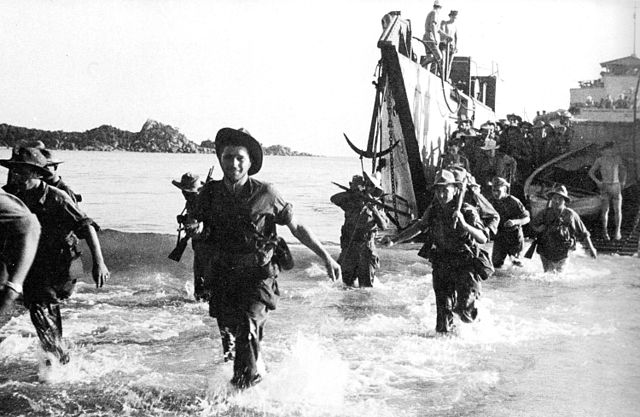
French “Marsouins” (Marine commandos) wade ashore off the Annam coast in July 1950
However early in 1946 negociations over the use of the port of Haiphong escalated with a confrontation between the Vietminh in control and the newly arrived military force at Haiphong. As these negociations dragged on, they eventually broke up on November 23, 1946, as the newly appointed admiral Thierry d’Argenlieu ordered the cruiser suffren to open fire on the port city, making at least 6000 dead, but securing the departure of Vietminh forces. D’Argenlieu arrived previously on 31 October 1945, as High Commissioner of the French Far East Expeditionary Corps, and in 1946 was promoted vice-amiral d’escadre and later admiral.
Outside the Haiphong bombardment he also installed a puppet Autonomous Republic of Cochinchina in violation of the March agreement with Viet Minh delegates in France. Considered a grave provocation, it ended negotiations and provoked in effect the First Indochina War. His actions has been so controversial that he was relieved of command by Paris in March 1947, replaced by Émile Bollaert. Soon, General Võ Nguyên Giáp brought up 30,000 men to retake Haiphong, while France prepared troopships to be sent with to Indochina. In 1947, as the guerilla was stepped-up, the French landed troops along the coast and the fleet grew to large proportions in 1949-50, mobilizing cruisers, destroyers, and the newly acquired aircraft carriers such as the arromanches, which will provide precious support during many operations to come. In 1949 also, the US started to give military aid to France, but soon the Pentagon and the world’s attention was focused by the Korean war. The French presence was now accepted as a way to prevent the spread of communism, the first allies contacted by Ho Chhi Minh for support after the US diplomatic indifference.
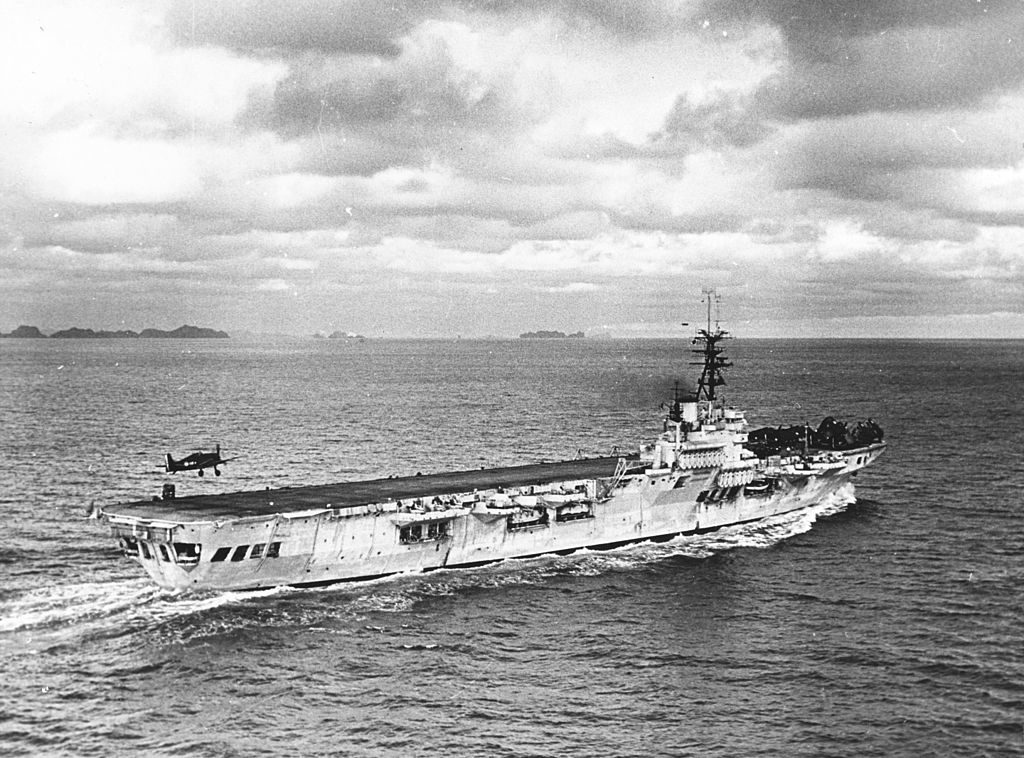
The Arromanches in 1953
French Naval Operations
The French Navy had operated in Indochina a large variety of ships: The carrier Arromanches, Dixmude (ex-Biter), Bois Belleau (ex-Belleau Woods) the battleship Richelieu (which for example bombarded Nha Trang but was recalled in the Mediterranean during the Suez crisis), all three surviving La Galissonnière class cruisers Gloire, G. Leygues and Montcalm, Duquesne made two campaigns there, and Tourville, which served with the Far East (FMEO) with her sister-ship and Suffren, later called the Naval Division of the Far East (DNEO).
However missions at sea only were useful to bring support in coastal operations and cover troopships and landings, but a large part of operations inland also called for a French riverine fleet. This started with very limited assets: A handful of converted civilian barges, manned by personnel released from Japanese POW camps, in bad shape. There were also limited logistics and support, but this allowed some control of the lower Mekong Delta, and later during the war, as far north as Phnom Penh. In 1946-49, these assets grew rapidly as more landings ships were transferred from the Mediterranean, which can be used with their shallow draft. In particular, former British landing craft were used since 1945, already available. They allowed to also patrol the Mekong’s tributaries and the Mekong delta. Some advanced bases along the river were also constructed, still there in the 1960s and sometimes reused by the USMC.
Jaubert’s riverine successes
Nevertheless, economic devastation and political instability at home prevented massive support: The navy had a low budget priority, ans US support was yet absent. Nevertheless, early tactical successes were due to the innovative tactics introduced by France’s first naval chief in Indochina, Commander François Jaubert. With the Far East Naval Brigade, he created a tool in 1945 combining naval-land river units first used to “clean up” Viet Minh positions around Saigon, before going northwards along the Mekong river and other major cities. His first mission called MOUSSAC happened in October 1945, and secured the river Bassac, also recapturing the provincial capitals My Tho and Can Tho.
He did this with 14 LCAs and 6 LCVPs (All British-built) brought by the aircraft carrier Bearn from Singapore and two marine companies, plus those of Richelieu and Bearn and additional French forces previous joint to the British after the withdrew from Indochina. Operation BENTRE took place around hanoi, with this composite force and troops, clashing with nationalist Chinese. In 1947, Jaubert established the first permanent riverine units called “Dinassauts”, two units (north and south), consisting of a variable number of armored and unarmored landing craft, river monitors, gunboats, and one battalion of naval or light infantry, around 1,200 men total for each. more units were created to fight on until the end of the war.
However not long after the incident at Haiphong, the Navy recalled most of the fleet at the worst moment. French amphibious operations went on and allow the recapture of Nam Dinh and cleaning up of the Red and Clear rivers. However in Paris, no reinforcements were sent as there was political change. The bombardment of Haiphong indeed was resented and only underlined the conflict’s growing unpopularity. Only a single cruiser and a handful of destroyers and sloops remained there, while there was no more support for the riverine force that tried to control an immense territory quickly retaken. The Viet Minh soon contested the rivers and the fleet was forced to limit itself to shore operation and patrol by using seaplanes. The gradual rebuilt of the French fleet air arm (Arromanches 1948, Lafayette 1951 ex-Langley, Bois Belleau 1953 gradually allowed some strength and flexibility in operations, however these forces were mainly engaged in operations inland.
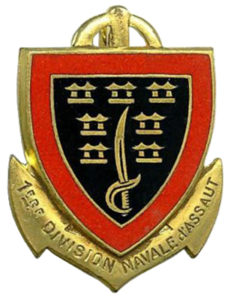 French Riverine warfare rested on three types of ships, better suited for quick moves than previous British landing crafts and old gunboats:
French Riverine warfare rested on three types of ships, better suited for quick moves than previous British landing crafts and old gunboats:
-Vedette de patrouille: Unarmored motor launch, 85 ft long, 2x 20-mm oerlikon, 2x 0.5 M2HB, 1x .3 cal., light mortar.
-Unarmored landing craft carrying troops
-Support armored landing craft (20 mm Oerlikon, 2 M2HB).
-Converted crafts, using former Chaffee tank turrets, 40-mm Bofors, 20-mm Oerlikon guns
From 1951 and growing US aid these dinassault units were given additional US-built landing craft and patrol boats.
Due to these efforts, and with the carrier-borne air support, the French gradually secured the Red and Clear rivers and their tributaries, cutting off the most effective Viet Minh logistical network, forcing it to withdrew into the mountains and and use land lines from China, notably the famous “Ho Chi Minh trail”.
A task split started from March 1952 as northern forces were charged of river convoy escort while the southern ones were limited to coastal patrols and control.
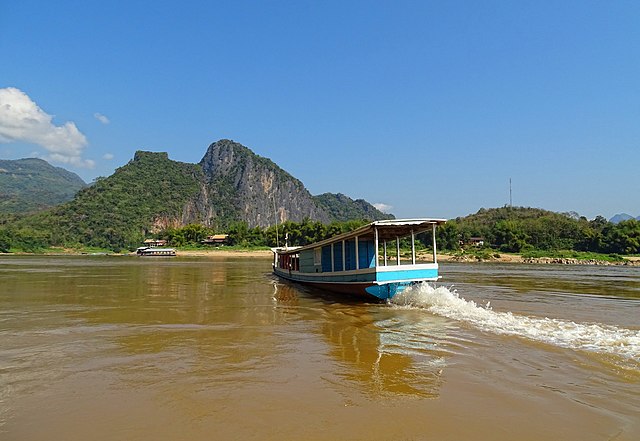
The Mekong river near Luang-Prabang
The end of the Indochinese war
But in a general way, the lack of a coordinated French strategy after 1950 and of support from the homeland doomed all effort to consolidate what was acquired, leading to ultimate defeat. From 1952, the lack of resources condemned the riverine units, supported by a personal of 12,000, and transporting and supporting 200,000 men in the field, to collapse and the Vietminh gradually reclaimed the black river, and then the red river and the clear rivers, opening again these quick and efficient supply roads for their own troops.
The stalemate from July 1951 to July 1953, saw a growing use of paratroops were used extensively and General de Lattre was replaced by R. Salan and later Henri Navarre, a hard-liner and unimaginative leader which thought hedgehogs were the best tactics, setting-up Dien Bien Phu as an advanced base to force Giap into a battle of attrition. The siege did not ended well, and this precipitated negotiations held in Paris since 1949. Peace was signed at Geneva, conventions establishing a partition of the country of Vietnam while Laos and Cambodia’s independence was confirmed.
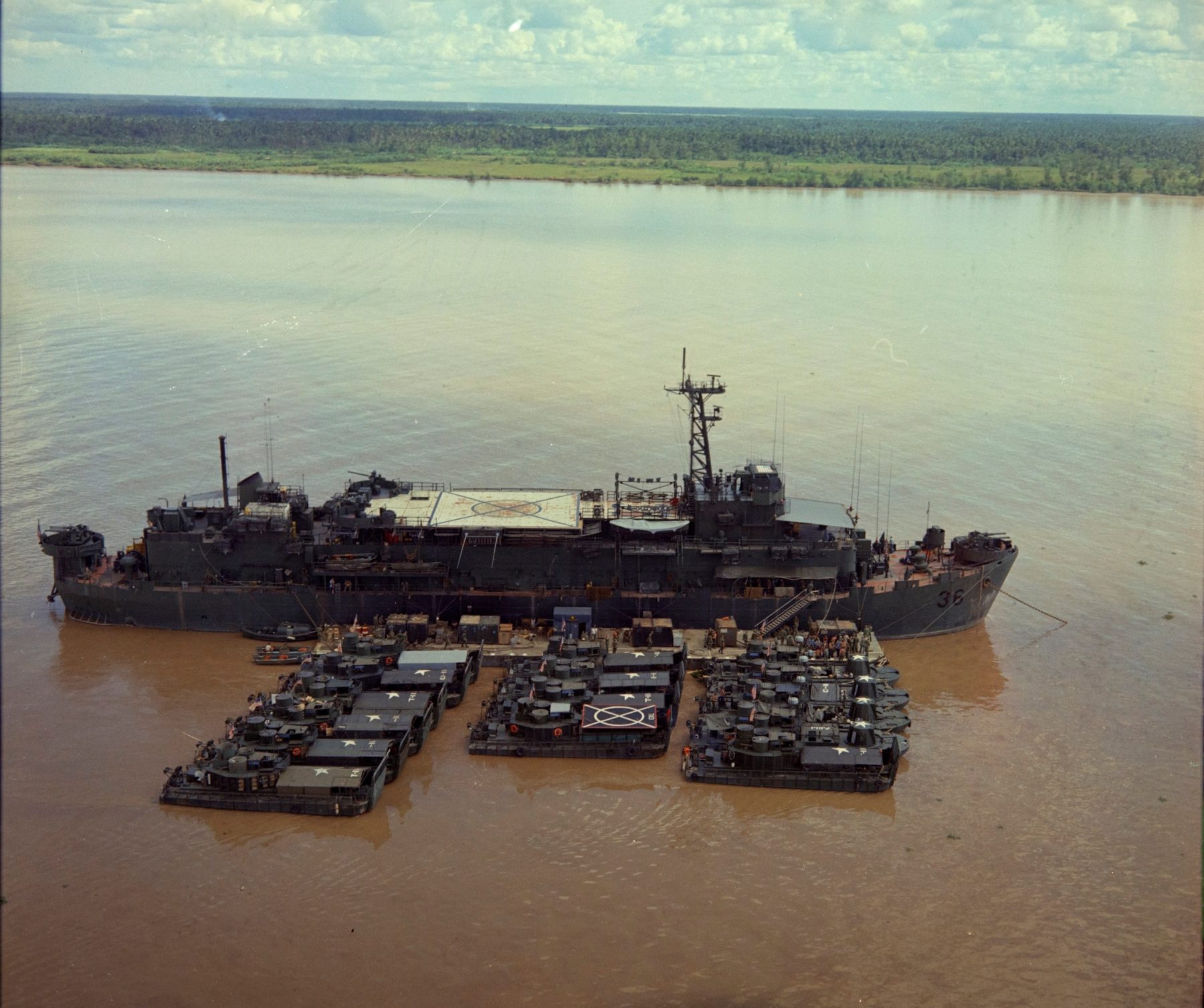
NARA USS Benewah and smaller craft on My Tho River circa 1967
Second phase: North Vietnamese attacks and ARVN support
Gradual involvement
The USA at first fully backed the South Vietnamese state, through financial and military support. The Việt Cộng, also called NLF (National Liberation Front), became an union of all South Vietnamese pro-communist guerilla movements, under the direction of North Vietnam, which also invaded Laos in support of insurgents already in the 1950s. The Ho Chi Minh Trail was created inland to supply the Việt Cộng, changing itineraries along the events, and ending completely in Laos. American involvement in the conflict was still limited at the start of the John F. Kennedy presidence, although the MAAG program ramped-up military advisors presence from a mere 300 to a thousand in 1959, and up to 16,000 in 1963 and 24,000 in 1964. The incident of the gulf of Tonkin put an end to a fiction of “advisors” which in reality were full combat units, and the Congress authorized and unprecedented escalation, troops sent there passing the symbolic threshold of 100,000 men.
By that time, the North Vietnamese (NVA) which wanted to bolster the south Vietnamese activity, had 40,000 regular NVA soldiers embedded in Viet-Cong units throughout South Vietnam. Thousands were also used as advisers. Also the NVA was backed by the USSR and the PRC, at least until the split. China in fact sent hundreds volunteers to man air-defense systems and be used in support roles in North Vietnam. No chances were taken as to send them to active units in the south and be captured.
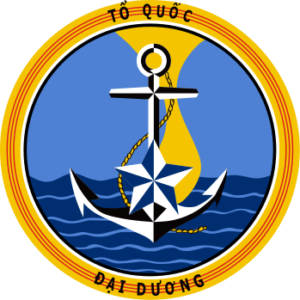
The South Vietnamese Navy
Although this subject will be treated more in detail on a dedicated post over reunified Vietnam (1975 to this day), the creation of the Republic of south Vietnam was solidified by a military backbone (ARVN), equipped and trained by US advisors. The Navy (Republic of Vietnam Navy, RVNN) was established on 1st January 1955 with a hotchpotch of units, most of them ex French vessels (including ex-British or ex-US ones), a few ex-Japanese ones, and converted civilian ships and boats, notably traditional junks and sampans.
Information is scarce about the details. Their initial task was to control the Mekong delta, as there was no proper blue water navy to efficiently patrol the coastal waters.
The force counted 15,350 men in 1955, including a Marine Corps (RVNM) versus 2200 for the NV Navy (VPN). By 1961, the RVN was twice larger, augmented by many MNDAP transferred ships, 39 surface combatants plus 215 landing crafts, 12 minelayers, 30 auxiliaries. It grew again until 1972, dealing a heavy blow to the NVA in coordination with the USN.
Truth is, there was no major warhip in service and the South Vietnam navy, dwarfed by the USN:
-Trang Quan Khai class frigates. These were Barnegat class seaplane tenders, seven transferred in 1946-48 to the coast guard.
-Tan Hung cass class frigates (Two ex-Edsall/FRM class DDE, transferred in 1964). One served as a training vessel as far as 1994.
-6 LSTs (tr.1962), 7 LSM (1955), 7 LSSL (1955), 5 LSIL (1955), 18 LCU (1954, 1971). The 1954-55 were ex-French, ex-US landing crafts/ships.
-To this green water and coastal fleet, the RVNN received 3 PCE (1961), 5 Admirable class minesweepers (1962), 6 PCE 173ft (1955), 2 SC types sub-chasers (1955), 19 PGM patrol crafts (1963), 26 82ft “Point” patrol crafts (1969), 3 Bluebird class (1959), 3 YMS Type coastal minesweepers (1954).
-For its brown water navy, force of nearly 700 ships also served the RVN: The first were former French vessels ceded in 1955, and the US transferred in the late 1960s and until 1972 many of their own riverine patrol crafts. The only known list given by the USN during the withdrawals states the following:
107 Swift PCs, 293 PBR, 28 RPC, 84 ASPB, 42 river monitors, 22 LCM-6, 100 ATC (armoured troop carriers), 9 CCB command crafts, 4 CSB (salvage ships), 24 minesweeping launches. Added to this there was the large “junk fleet” backed by the US but relatively inefficient (see later).
The North Vietnamese Navy
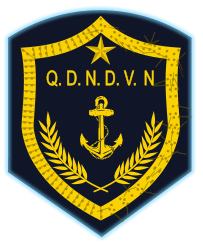 In 1955 the French Navy transferred most of its remaining local naval assets to the new Republic of Vietnam, few were available in the North. The Vietnam People’s Navy (VPN) started with whatever assets can be mustered, in May 1955 when it was created. But General Võ Nguyên Giáp started started to build a flotilla in 1946 while a department for naval R&D was created in 1949. The 1955 General Directorate of Coastal Defence concentrated on coastal defence and riverine warfare. As shown by statistics and data from Conways, the composition of the navy was unknown before 1961, when the USSR started documenting its transfers to the VPN:
In 1955 the French Navy transferred most of its remaining local naval assets to the new Republic of Vietnam, few were available in the North. The Vietnam People’s Navy (VPN) started with whatever assets can be mustered, in May 1955 when it was created. But General Võ Nguyên Giáp started started to build a flotilla in 1946 while a department for naval R&D was created in 1949. The 1955 General Directorate of Coastal Defence concentrated on coastal defence and riverine warfare. As shown by statistics and data from Conways, the composition of the navy was unknown before 1961, when the USSR started documenting its transfers to the VPN:
-50 “Swatow” type patrol crafts, ex Chinese, based on the P6 (transferred 1958, 30, and 1964, 20). 26 were either lost in action or discarded until 1982.
-12 P4 FAC in 1961-64, 6 P6 FAC in 1967. So there are conflicting informations about the Gulf of Tonkin incident, involving for some Swatow-class patrol boats (based on the P6) rather than P4 boats in the second alleged attack on 4 August. The Swatow class PBs were inded by far the most numerous vessels in the VPN.
-15 SO-1 sub-chasers (1960-66), 8 Shanghai II (ex-PLAN) LPBs (1966-68)
-2 Poluchat class PBs (1960)
From 1972, and into the 1980s, many new, more capable Soviet vessels were transferred, but this is beyond our scope.
The ‘Viet Cong Navy’ never had a status but existed through hundreds of traditional junks and Sampans, and captured ex-French or ex-US crafts over time.
The official start: The Gulf of Tonkin incident
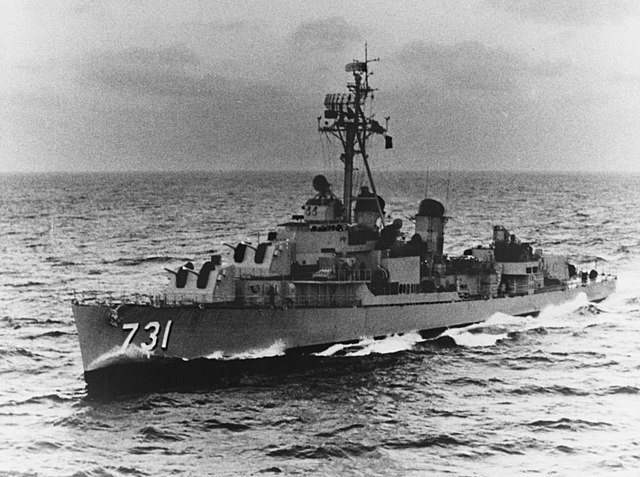
USS Maddox
In the Gulf of Tonkin incident in August, U.S. destroyer USS Maddox was alleged to have clashed with North Vietnamese fast attack craft. This presented as a nice casus belli which pushed the U.S. Congress to pass the Gulf of Tonkin Resolution. This gave President Lyndon B. Johnson his eagerly awaited full authority to scale up American military presence in this theater. Deployment of large units was now approved, and troops sent there rose to 184,000.
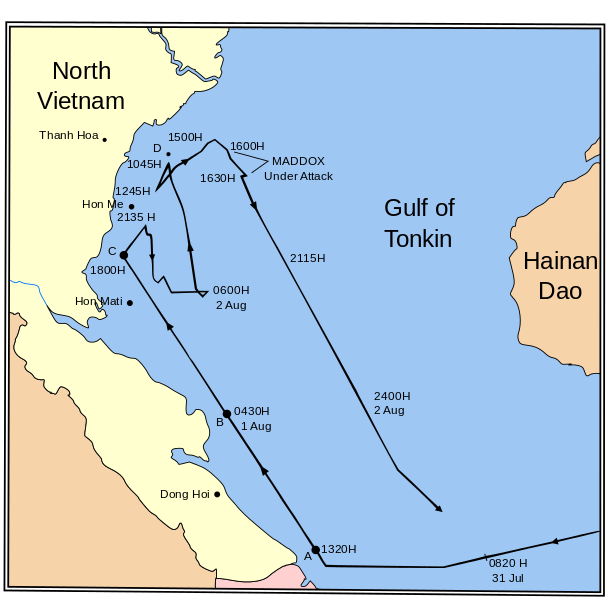
The incident: What really happened this day ?
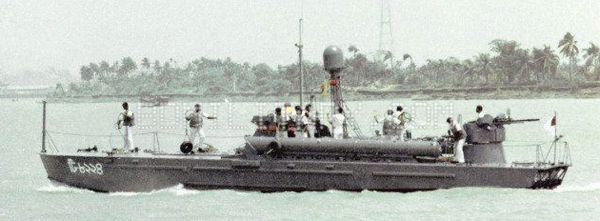
A P4 FAC, such as those unleashed against USS Maddox
Naval clashes often led to war. It was the case in US case in particular, 1960 with Fort Sumter, a naval fort, in 1898 with the loss of the Maine in La Havana, also in 1915 with the sinking of the Lusitania, nearly the case during the Atlantic war in 1941, and of course, Pearl Harbor. In French Indochina also the shelling of Haiphong was clearly a cause of escalation. The gulf of Tonkin Incident however is still the subject of controversy. For modern historians it appeared as a “convenient” event, and was not an imaginary attack, but a real one between ships of both nations for the first time.
On 4 October 1964, USS Maddox was posted in the gulf of Tonkin for secret electronic warfare support measures mission (codenamed “DESOTO”) very close to Northern Vietnamese territorial waters. This intelligence mission was ongoing since July 31, under command of captain George Stephen Morrison from USS Bonhomme Richard. USS Maddox was under strict orders not to close more than 8 miles (13 km) from coast, or the island of Hon Nieu where a SOG (South Vietnamese) commando was to land for a covert operation. Situation in the area almost reached boiling point as their missions multiplied, as well as a more aggressive NVA response. The NVAN (North Vietnamese Army Navy) was quite small at the time, but comprised 12 P4 class fast attack crafts armed with torpedoes, not “torpedo boats” as stated by the press of the time, although technically right. Needless to say, these modern 21 inches torpedoes were deadly for any ship, more so for a destroyer.
It seems the culprit for the attack started with the SOG commando raid during the night of July 30 of a North Vietnamese radar station on Hòn Mê island. Whether communications failed, or none was sent, but the USS Maddox was unaware of this, yet was close to the event, leading NVA HQ that she was probably involved as a support ship. The 31, the destroyer was indeed closing to Hòn Mê island according to its intelligence planning. The next day, on 1st August, North Vietnamese patrol boats started to track the destroyer and communications were intercepted about the preparation of an attack. This urged the destroyer to retreat, at 25 knots.
However P4 boats were still dangerously trailing and closing in to the point on 2 August, warning shots were fired at them by USS Maddox. Then three TBs attacked, signalled by the destroyer by then 10 nautical miles (19 km; 12 mi) in international waters. The destroyer also claimed to have evaded a torpedo, and took no hit. She repelled the attack, but two TBs later came back cose to 5 nautical miles (9.3 km; 5.8 mi) of the destroyer and launched their torpedoes, but they missed by 100 yards (91 m), thanks to quick manoeuvres. Soon after four USN F-8 Crusader jets scrambled from USS Ticonderoga were on site, scaring away the TBs, that have been pummelled by the Destroyer 5-in guns. One was claimed sunk and another badly damaged. She had been close enough at some point to receive 14.5 mm KPV fire.
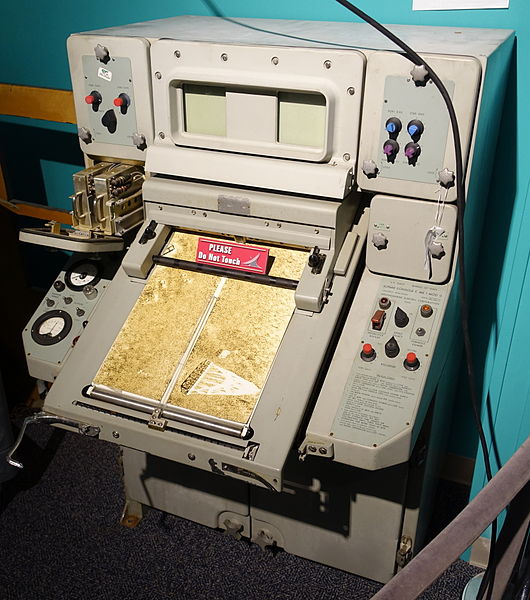
Sonar Console C Mark I, mod 0 similar to the one carried by USS Maddox, of the modernized Gearing class. US national museum of electronics
The next day, 3 August, she had been joined by USS Turner Joy as a reinforcement, while NVA propaganda claimed one torpedo hit and a USN fighter down. It seemed the motive for the attack was that the destroyer closed inside the 12 nautical miles (22 km; 14 mi) limit marking NVA territorial waters around Hòn Mê Island, which was seen as a provocation, added to the supposed attacks of fishing boats. This limit was not recognised by the US and Johnson ordered Maddox and Turner Joy to return and test the NVA resolve in daylight runs. Another DESOTO patrol off the North Vietnamese coast started in effect on the 4 of August, to “show the flag” as close as 11 miles (18 km) from the coast, in heavy weather and poor visibility.
Both destroyers received sonar and radar signals and at some point, they opened fire on four radar spots, claiming two ships sank, never confirmed. Johnson then ordered an air retaliatory attack (Operation Pierce Arrow), despite the fact at the white house, the reality of an attack was left unconfirmed, leaving to local commanders the impression of a real attack on the 2, and a “suspected, but unconfirmed one” on the 4, the day generally associated with the incident. It is known that freak weather could cause shadow blips, and some confusion also for the sonarman, which “heard” a torpedo coming, never spotted. So the incident which radically stepped-up the war, voted by the Congress, was likely the result of bad weather.
1964 to the great turn of 1968
Since the escalation started in 1964, the People’s Army of Vietnam (NVA in military parlance) started an era or more conventional warfare with large scale battles and using armor more extensively. The build-up progress until Secretary of Defense Robert McNamara started expressing doubts of victory already in the end of 1966. Air superiority and firepower were professed by General Westmoreland in charge since 1964 while ground troops would be involved in constant, deep search and destroy operations, involving combined arms when finding the enemy. Strategic bombing also commenced against North Vietnam and Laos, arguably more successful.
The Tet Offensive of 1968 showed lack of progress in Westmoreland doctrines, and a growing sense of stalemate without clear objective in view, as exemplified in the “hamburger hill” movie. The doctrine was now of attrition, the famous “body count”, hoping more firepower would ultimately win the day.
In 1968 however, reassuring messages about progresses to the press were shattered: VC and PAVN mounting large-scale urban offensives that year during religious festivities. It caught both the Army and white house completely off guard. The press changed tone, and U.S domestic support began rapidly fading. The ARVN was somewhat neglected after Tet, and remodelled after U.S doctrine. Despite of this, VC heavy losses during Offensive and better combined U.S.-ARVN operations started to invert the curve and the whole operation was a tactical defeat for the NVA.
The paradox was, at the end of 1968 VC insurgents had been all but wiped out from South Vietnam, still clinging on tenuous holdouts, while recruitment dropped and desertions augmented. Guerrilla operations became more rare, so much so the PAVN ramped-up its involvement. The next year in 1969, North Vietnam declared a Provisional Revolutionary Government in South Vietnam, hoping to attract some international recognition for the VC but southern guerrillas were now directed in coordination with PAVN forces. In 1970, 70% of operations were led by them, and now crossed national borders as Laos was invaded by North Vietnam and Cambodia was used as a supply route since 1967 and started to be bombed by U.S. aviation creating some resentment in Cambodia. Norodom Sihanouk was deposed by the Cambodian National Assembly, followed by a PAVN invasion at the request of the Khmer Rouge, which ended in a bloody Civil War and U.S.-ARVN counter-invasion.
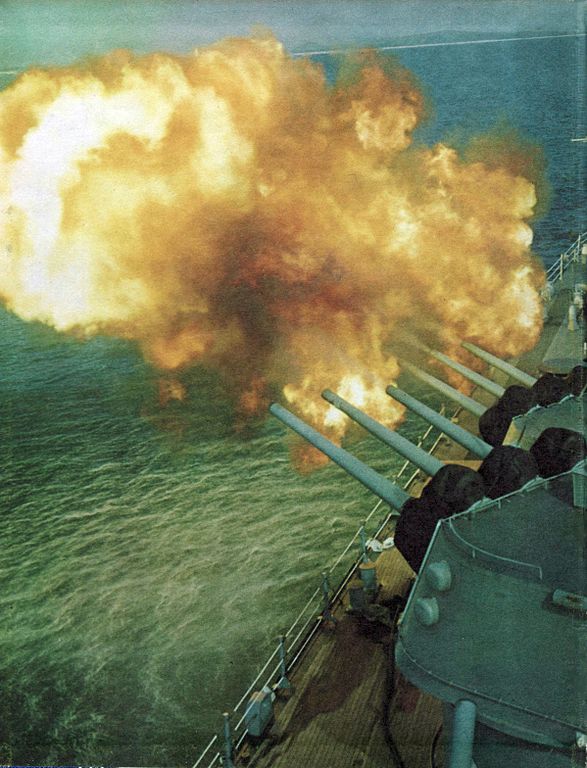
USS Galveston firing over Vietnam
In 1969, U.S President Richard Nixon was elected, and professed a “Vietnamization” of the conflict with an expanded ARVN, and stepping-up the scale of operation, amidst demoralization of soldiers returning home, widespread domestic opposition and recruitment fall. The withdrawing in effect started by early 1972, leaving a strong air, artillery, naval support, and also advisers. The plan was to boost the ARVN enough to resist another offensive, despite a growing local opposition, desertions, and the generalized corruption of the regime. It stopped nevertheless the largest mechanized PAVN Easter Offensive in 1972, the most impressive push since the invasion. It proved attritional on both sides but the PAVN and ARVN failed to reach their respective objectives, although the latter lost territory. Paris Peace Accords started in January 1973. As signed, all U.S forces were to be withdrawn. It was confirmed by the Case–Church Amendment passed by the U.S Congress (15 August 1973).
It ended, at least officially, any military involvement. However the Peace Accords did not stand the test of reality in Vietnam as fighting raged on until 1975. The 1975 Spring Offensive was the final blow for the south, no longer buttressed by US forces: Saigon fell on 30 April. Unification of the country followed the next year. It is estimated the PAVN lost about one million soldiers, the VC perhaps two millions, and the civilian cost was ranging from 966,000 to 3.8 million for Vietnam alone, not counting Cambodians, Laotians, versus 58,220 U.S. troops, 1,626 missing. The ARVN lost up to 1968 some 850,000 soldiers, but 1,500,000 in the 1974–1975 period alone. It was one of the bloodiest conflict in history, certainly of the cold war.
US Navy involvement
A 1968 official movie by the USN
The U.S. Navy had to undertake a wide array of diverse missions during the War with the USAF as close partner, especially during the Rolling Thunder and Linebacker air campaigns and operations in Laos and Cambodia. The many duty however for the Navy, and a very old one indeed, was to developed a highly effective blockade to prevent resupply by sea, something the French never had the naval assets to do. Also the fleet was naturally engaged in naval gunfire support missions all along the coast, against enemy targets, littoral and marshy areas of Vietnam, while providing amphibious transport for Marines for the Ist Corps.
The riverine warfare was also a very important aspect of these operations. On the Mekong and its tributaries, the Navy implemented a control by building up several task forces to protect commercial traffic, but also assist allied ground forces by pacifying these eras and interdict enemy penetrations as well. These inland waterways indeed were vital for the Vietminh, deprived of good roads and air support. The riverine force aso was developed to carry out logistics operations, building and managing countless shore facilities throughout South Vietnam. They also provided extensive medical support and supply depots.
A few U.S. Navy advisors arrived in South Vietnam in the fall of 1959, but by 1969, they were 564 assisting the Republic of Vietnam in developing the Vietnam Navy (VNN), starting from 5,000 sailors and 122 vessels but reached at some point 42,000 men and 1,500 vessels. By 1972, this made this fleet, the fifth largest in the world. Naval advisors were present during all these years, experiencing all hardships and danger aboard these ships and craft.
Meanwhile, of the massive USN involvement really started as a response to the North Vietnamese attack on USS Maddox (DD 731) in the Gulf of Tonkin, August 1964 signalled the start of air and surface bombardment against North Vietnam. The most prominent force deployed there was of course the Seventh Fleet aircraft carriers. They supported allied air campaigns, cutting VN supply lines by hammering fuel and supply facilities but also power plants, bridges and the railroads network, not only in North Vietnam but also Laos and from 1970 in Cambodia as well. They complemented the rather heavy handed and inefficient bombardments of B-52 which harassed the Viet Cong, coming from Guam or the Philippines. The USN roamed the North and South Vietnam coasts with impunity as there was no missile deployed against them. They shelled many targets (about 12 were cruisers, a cruiser and a battleship, all conventional or semi-converted). Naval Attacks during Rolling Thunder never proved decisive.
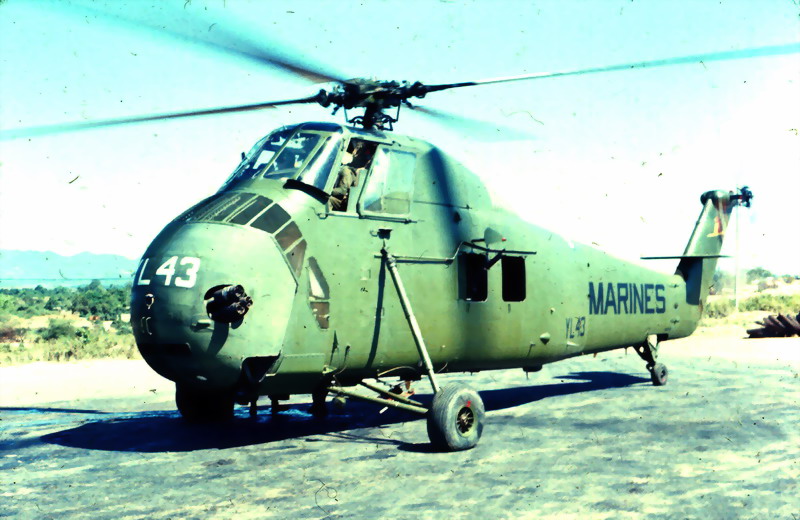
A U.S. Marine Corps Sikorsky UH-34D Seahorse of Marine Medium Helicopter Squadron HMM-362 in the Vietnam War in 1967. Due to the pre-1962 designation “HUS-1”, the UH-34 was often named “Huss”.
The 1965–68 interdiction campaign was followed by the Linebacker attacks in 1972, more effective, and during its early phase, the Navy flew about 4,000 sorties a month, 60% of the total air effort. Shelling amounted to over 111,000 rounds and mining major ports (Operation Pocket Money) was a resounding success. By December 1972, Nixon decided to resume the air offensive, called Linebacker II and focusing on Hanoi and Haiphong. Navy aircraft provided air defense and reconnaissance, while the ships often coordinated defence against MiGs intrusions.
From 1965 was also established a U.S. Navy Coast Guard patrol force, complementing the existing VNN anti-infiltration forces, along 1,200 mile of coastline in South Vietnam. Called Operation Market Time it was performed by Task Force 115, trying to prevent any seaborne infiltrations. It became arguably the most successful interdiction campaign of the war. Indeed, until then the North Vietnamese sent steel-hulled freighters and rather innocuous trawlers, and smaller ships, down to simple traditional sampans.
By December 1965, Operation Game Warden started. Its objective was to patrol major rivers and canals in the Mekong Delta and also what was called then “Rung Sat Special Zone”.
For this, the fleet operated a fleet of 31 ft patrol boats supported by attack helicopters and SEAL units.
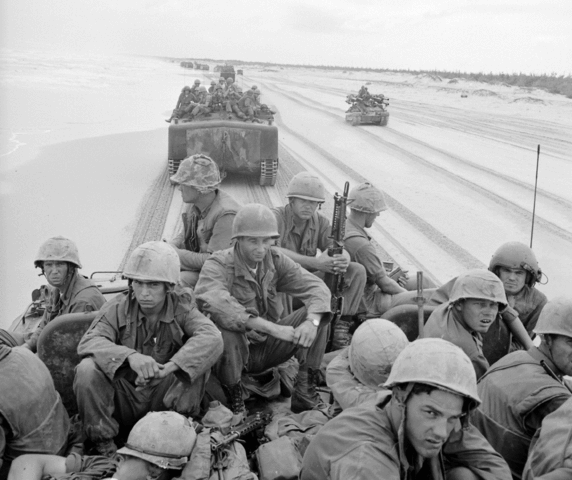
LVTP-5‘s of the USMC’s carrying 3rd Marine Division troops along the beach in 1966. Notice the escorting M50 Ontos behind.

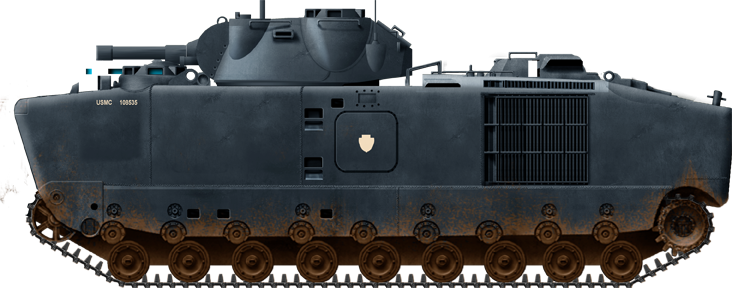

The LVTP-5 was the true “best of burden” of the USMC during the Vietnam war; From to to Bottom, regular Marines LVTP-5, LVTP5A1 Howiter used in fire support in navy blue, and LVTE-1 “potato digger” used in coastal operations to clean up the beaches from mines and obstacles. First designed in 1956 to replaced the LVT family of WW2, the LVTP-5 was entirely closed. It was also slow and cumbersome, had a large capacity (up to 35 marines). Over 1,120 were built by the Ingersoll Products Division 01 of Borg-Warner Corporation. They were replaced by the smaller LVTP-7
This was called the naval inshore force, Task Force 116. It imposed a veritable curfew in the whole region, interdicting troop and supply to ever arrive. They in effect greatly curbed Communist taxation of peasants, and prevented large operations from the Viet-cong to take place. This force was also responsible of keeping safe the vital waterways to Saigon and Hue, and safeguarded South Vietnam’s ports, ensuring thy stayed free and opened for allied use. Trade was facilitated, securing also government control over the “breadbasket” of South Vietnam, inhabited by six million.
The Mobile Riverine Force was a three arms combined unit which also included river assault of small groups, SEALS and delta force in search and destroy missions of Viet Cong units in the Mekong Delta. By 1967, elements of the 9th Infantry Division used a flotilla of armored riverine monitors and special crafts, called Task Force 117. They launched a
series of daring amphibious assaults, even achieving the highest kill ratio of the entire war, about 15 to 1.
When the Tet Offensive commences, the Mobile Riverine Force was assisted by Task Force 116, and fought on to save the Mekong, preventing any riverine reinforcements to the South Vietnamese troops; By starving the Viet Cong, they ensure their attacks on provincial capitals and major towns would loose traction quickly. The whole Mekong delta was therefore secured. Of course smaller riverine units part of the I Corps of the USMC, called Task Force Clearwater were also instrumental in keeping the Perfume and Cua Viet rivers open during the Offensive as well.
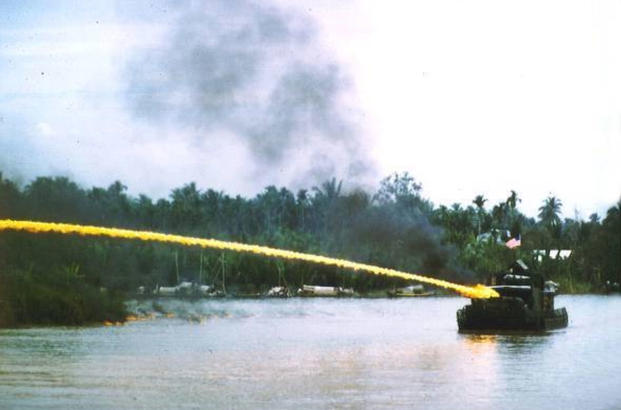
A ‘Zippo Monitor’ making a “napalm BBQ” in USMC parlance.
A multi-arms command unit called the Southeast Asia Lake, Ocean, River, and Delta Strategy abbreviated to SEALORDS was mounted, combining and managing elements of Task Forces 115, 116, and 117 with the VNN, in order to halt infiltrations from Cambodia, starting in late 1968. New patrol barriers were mounted near the Cambodia. Also military presence was ensured deep inside the Mekong Delta, reducing Viet Cong activity and preventing major offensive, especially during the 1972 Easter Offensive.
Meanwhile, the freighter fleet of the Military Sea Transportation Service carried 95% of the hardware and supplies to allied forces. Navy Seabee construction units helped this by creating a major support base at Danang and another in Saigon. They supplied Navy and Marine Corps but also took charge of the Air Force and Army. They managed a fleet of riverine supply craft and barges operating in and from the Mekong Delta and beyond, a more secure way (and faster) than difficult trails prone to ambushes (see the saga of the gun trucks in vietnam).
The Navy also established and managed two hospitals, also at Danang and Saigon fo triage and possible repatriation, as well as the support of two hospital ships, USHS Sanctuary (AH 17) and
USHS Repose (AH 16) with competent personal, excellent equipment and a Nurse Corps.
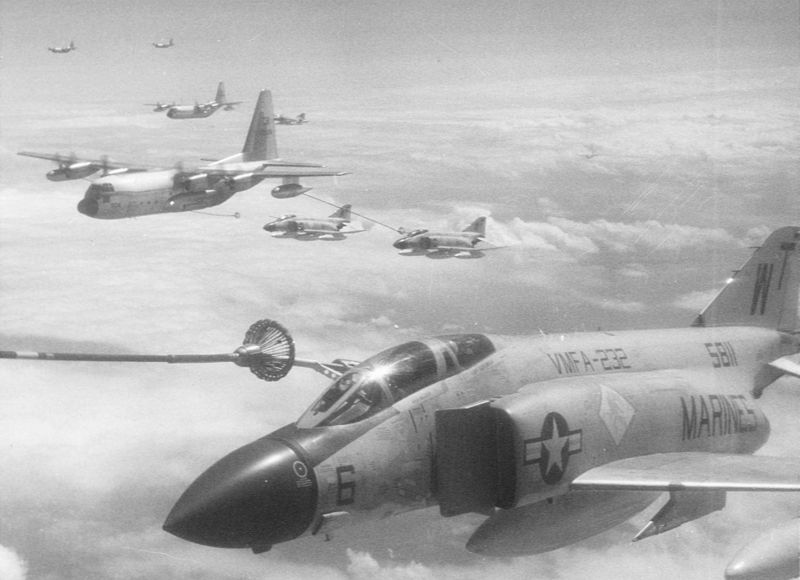
F-4J of VFMA 232 air refuelled during Rolling Thunder
Amphibious operations of the Marine Corps was backed by amphibious assault ships for all scales of coastal assaults on South Vietnam. In Operation Starlight, August 1965, both the USMC and ARVN units managed to trap and destroy the 1st Viet Cong Regiment, which dissuaded Viet Cong units from the on, not only of combat against amphibious forces, but also to contiture strong points on the coastline, entirely reclaimed by allied forces. The naval command also used these amphibious assets to bring quickly massive reinforcements, with heavy equipments that helicopters could carry, as a sort of floating reserve for quick reinforcements. This proved instrumental during the battles along the Demilitarized Zone (DMZ) in 1967–68. In total, 1.842 million Sailors would see these waters during their active life, while the combined operations for this duration of conflict gave a solid experience of combined arms tactics and management of air and ground force projection to the naval staff. This was paid by the loss of 1,631 killed naval personal and 4,178 wounded far less however than the Marine Corps. The Navy suffered its most tragic accident on the carrier USS Forrestal (photo).
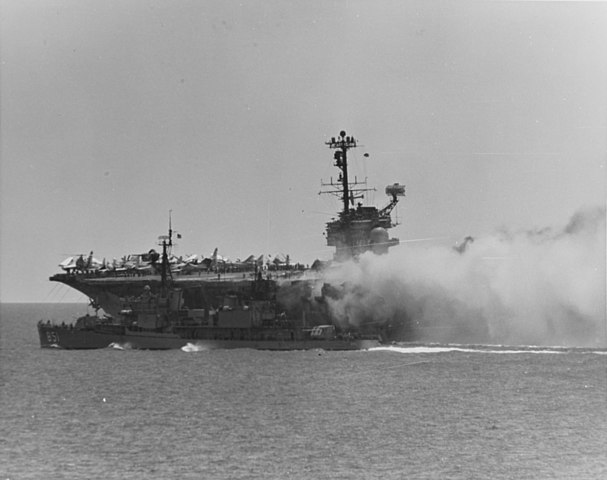
Riverine warfare in Vietnam

A LST-base and support ship in the Mekong river, supporting a fleet of various mobile riverine force crafts, seen here, mostly monitors of the
Constitution of USN “Brown Navy”
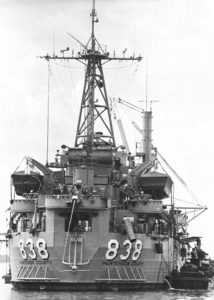 From December 18, 1965, the United States Navy formalized a brand new brown-water navy, tailored for operations in Vietnam. This brown-water navy initially patrolled inland waterways of Mekong River (Mekong Delta), ideal for the Viet-Cong to hide in. South Vietnamese river craft called RAG—River Assault Groups were the first boats to be deployed there, inherited from the French Navy, and used by the ARVN. They had been previously received from the U.S. as military aid against the Viet Minh, which also helped standardize maintenance.
From December 18, 1965, the United States Navy formalized a brand new brown-water navy, tailored for operations in Vietnam. This brown-water navy initially patrolled inland waterways of Mekong River (Mekong Delta), ideal for the Viet-Cong to hide in. South Vietnamese river craft called RAG—River Assault Groups were the first boats to be deployed there, inherited from the French Navy, and used by the ARVN. They had been previously received from the U.S. as military aid against the Viet Minh, which also helped standardize maintenance.
However in the 1960s, a new material saw growing use, fiberglass, which helped builsing a fleet of fast air-transportable Patrol Boat using water jet propulsion. In time, they became the main interdiction vessel for patrolling the riverine areas and retake control of inland waterways, way north.
For coastal duty howver, the South Vietnamese Navy had a variety of seaworthy craft of various origins,, ex-US/Ex-French most of them transferred in 1954-55. They were replaced by the new Swift Boats of “PCF—Patrol Craft Fast, aluminum, 50 footers in ordnance. Also United States Coast Guard Point-class cutters, well suited for the task and built and sent there. The Swift Boat completed the work of the PBRs inland, maintaining a constant surveillance between the transition green/brown waters along the coast line. The USN Coast Guard part in this conflict is often overlook, but their experience and pethods were really useful. This coastal/riverine was mostly passed on to the ARVN after the war.
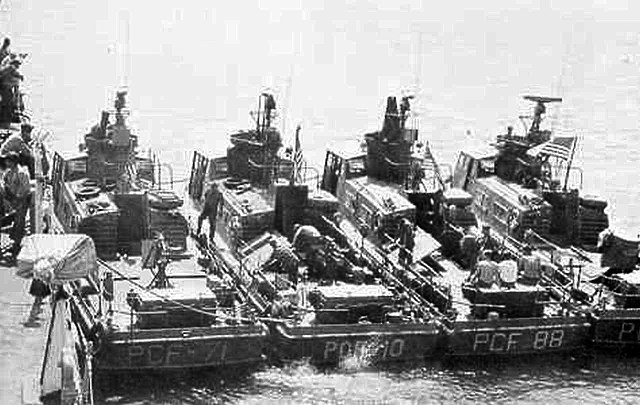
A fleet of Swift Boats
The brown-water Mobile Riverine Force operated in effect as a joint venture between the Navy and Army, often carrying troops, and using radio for aviaton coordination. The first units were modeled after the earlier French Dinassauts groups for the First Indochina War. They even reused previous bases along the Mekongs and tributaries, vastly expanded and modernized as well as new ones over the sixties. The earliest units only counted on surplus World War II landing craft, namely LCMs, LCVPs, LCIs, etc. which not very fast or tailored for patrols, handicapped notably by their short range.
-The French designed STCN (all-steel “V” hulled boat, 40 feet was in turn influenced by the US LCVP boats used by French influenced the design of the first original riverine boat tailored for the taslk:
-The Assault Support Patrol Boat (ASPB). Also called “Alpha boat”, it was a 50-foot, all-steel hull, aluminium superstructure vessel built by the Gunderson Company in Oregon, USA. They had a reinforced construction, in order to survive mine blasts. For this, they were often used as ad hoc riverine minesweeper.
Alongside these were deployed PCFs, ASPBs, and monitors, which were essentially modified LCMs (see at the end of the article). They together formed the Mobile Riverine Force, which used supporting facilities called either “Yard Repair Berthing” and “Messings” or “advance bases”, as well as mobile bases installed in LSTs, as well as helicopter and seawolf units.
This brown-water navy was instrumental during Operation Market Time and Operation Game Warden. In general they were largely successful, stopping North Vietnam riverine supply roads to the Viet Cong. That constant flow of weapons and ammunition stopped completely during the ongoing Operation Market Time which lasted from from 1965 to 1970.
The Brown-water river assault units were initiated in January 1967, working with the 2nd Brigade, 9th Infantry Division under command of Major General William Fulton. With USN Task Force 117 they formed the Mobile Riverine Force. This fleet was turned over to the South Vietnamese and Cambodian governments under the Vietnamization policy, still working with advisors.
https://www.youtube.com/watch?v=VxtCGSu24Bo
Actual footage of the riverine warfare in Vietnam. See also
The Seawolf, HA(L)-3
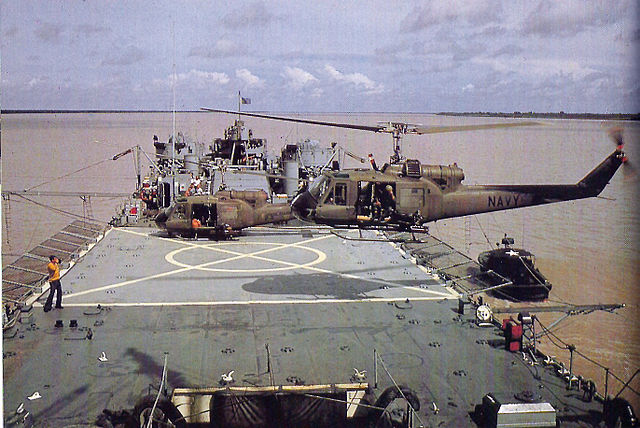
Bell UH-1E Huey helicopter of U.S. Navy light helicopter attack squadron HAL-3 Seawolves landing on the converted tank landing ship USS Harnett County (LST-821) between combat operations in the Mekong Delta, Co Chien river, South Vietnam, in October 1967. A U.S. Army UH-1B is parked in the background.
The HA(L)-3, (Helicopter Attack Squadron (Light) 3), nicknamed the “Seawolves”, was an all-volunteer squadron in the US Navy formed in support of Naval Special Warfare operations and Mobile Riverine Forces during the Vietnam War. They operated in close coordination with the USN, with Navy Huey helicopters, the workhorse of the conflict, supported sometimes with Huey Cobra. They started operating in 1967, after detachments of helicopter gunships were transferred to the Navy, for operations in the Mekong Delta, two detachments of Army UH-1B gunships at first from shore bases and later from USN patrol craft tenders. They provided close air support (CAS) for the Brown-water Navy. Later HC-1 was divided into four separate units, notably Helicopter Attack Squadron (Light) 3 (HAL-(3)), “the Seawolves” under command of LCDR Joseph B. Howard. They operated until 1972, making 120,000 combat sorties and loosing 44, plus 200 wounded in action.
The “Junk Force”
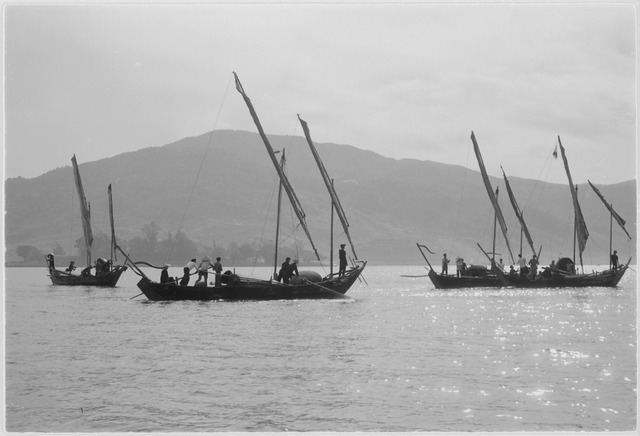
The Junk Force was called in Vietnamese Lực Lượng Hãi Thuyền, a naval security Coastal Force of the Republic of Vietnam. It was composed of civilians, trained by the Navy and coordinated with the Republic of Vietnam National Police. Created ormed in 1960 with the help of USN advisors, it was fully integrated into the Republic of Vietnam Navy (RVNN) in 1965.
It was originally an idea of Admiral Harry D. Felt, C-inC U.S. Pacific Command (CINCPAC), a proposal accepted by President Ngo Dinh Diem. Soon it was colloquially nicknamed the “junk force” directly under South Vietnam’s Department of State for National Defense. This was a paramilitary riverine and coastal unit in line with the self-defence principle pushed by the Kennedy administration at that point. Therefore, funds were unlocked to help the construction of no less than 501 junks in traditional South Vietnamese boatyards.
The plan for 420 sailing junks and 63 motorized junks manned by 2,200 civilian irregulars, naturally skilled at sea. Their task was to patrol inshore coastal waters, up to 5 miles (8.0 km) from the coast, staying in view of it at all times. It was hiped this inocuous-looking fleet would blend in with usual fishing junks, allowing them to close on suspect junk for a search and boarding mission. In total 21 junk divisions were created, for 23 junks each, patrolling in its own area of 30 miles (48 km) along the coastline. They were coordinated by radio from their own coastal command surveillance center, reporting in turn, to one of the four VNN coastal districts headquartered in Danang, Nha Trang, Vung Tau and An Thoi. By October 1963, advisors convinced the ARVN command to create four naval zone commands, based on their respective geographical areas with an overall commander equivalent to an army corps commander. That year, the “Junk Force” comprised 632 junks manned by 3,700 civilian crewmembers. Problems shown recruitment of experience sailors ore difficult than expected, most proffering living from the sea rather than joining this force, in order to sustain their family.
By desperation, the RVNN starting recruiting urban peasants and refugees but these northerners were ill-suited to the task and often deserted. Attrition outpaced recruitments, especially in 1964. This was also due to the deplorable conditions under which they served, not under USN responsibility. Without pay for months or training, and non-existent morale, led to an enquiry from the advisors team in 1964. Their assessment was confirmed by Naval Advisory Group Saigon The problem was above, as often commanders almost never received funds for to care for the sailors. It was compounded by a 1963 medical survey, noting 50% of the crews having diseases. The lack of water treatment tablets (iodine) for example, or Choloroquine, led to widespread illness. Also these recruits were not either trained to care for their wooden junks, which required more maintenance than planned. In 1964 174 junks were in too bade shape to sail and needed urgent repairs, 64 being beyond that stage. This ate most of the effective force of each Coastal District, having sometimes less than 20% junks serviceable. The Vietnamese government privileged the force expansion at the expense of maintenance, and short-sightedness from the naval units staff.
In addition, as this force was known by the Vietcong, they started to heavily militarize their own junks, often more powerful and far better armed, with trained and motivated personal. They also used in riverine and shallow waters areas smaller sampans, that Junks could not follow. Coordination with the Republic of Vietnam Air Force (RVNAF) also failed due to the lack of serviceable radios, absence of communication protocols, and aircraft simply being used elsewhere. Despite of this, the “junk Force” controlled 127,000 junks in 1963 alone, leading to 3,000 VC arrests all combined. In 1964-65 however, the VC started to use fast motorized, metal junks and steel trawlers for supplies and the situation degraded fast in 1965. During Operation Market Time, a naval blockade, they proved the weakest link in the chain with less than 40% of the available force in paper, on patrol at one time. Situation was such that the VN reclaimed the coastline North of Vung Tau over 142 miles (229 km) in the north and 300 miles (480 km) south. So much so that these Coastal Force were found totally isolated in enemy territory.
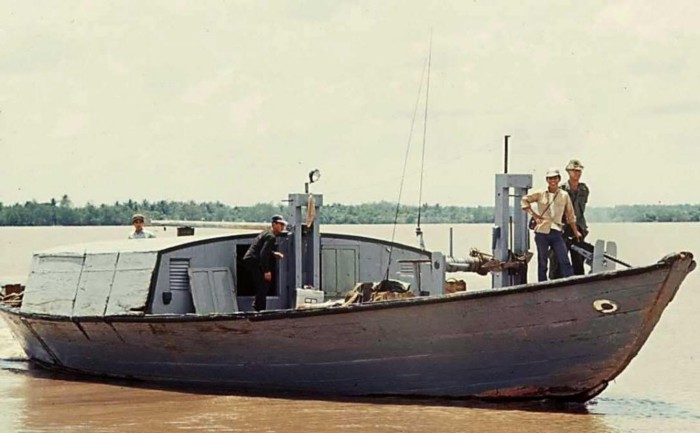
A Yabuta command Junk (src unknown)
The Naval Advisory Group eventually recommended to discard all remaining junks, until 1966, to be replaced by 90 brand new “Yabuta” junks built in Saigon in 1965. The name come from a Japanese engineer which designed a fiberglass 57 feet (17 m) junk armed with a .30-caliber machine gun and powered by a 110 hp diesel, for 10 knots. Meanwhile, the remaining wooden junks were refurbished anew. with funds from the U.S. Military Assistance Program. Crucially also, wages were paid to the shipyard workers but despite of this production stalled from 3 to 7 junks a week in 1965 to just one every five weeks in 1967. Workers just found three times better salaries elsewhere in private companies than Government wages. Nevertheless, the new Junks proved way more capable and by 1965, Task Force 71 alone reported 14,962 junks, inspecting 2.5 and 7% depending on their position along the coast, and could not keep up. Only half of the assigned Sea Force ships participated in the operation. As coined by Vice Admiral Paul P. Blackburn, 7th Fleet commander, it was “effectively non-existent”. In 1967 reached its lowest point and loosely participated in the ensuing operations, being reduced to a token force.
The end (1973-75): ARVN naval forces and aftermath
The ARVN Navy
Both Navies of North and south Vietnam were quite small. The subject will be treated in a future page about the vietnamese naval forces (1975), also detailing respective forces of the NVA and ARVN during the war, and operations.
Last chapter in a tragic history: The Sino-Vietnamese war of 1979
As amazing as it seemed, after a long fight for its independence which started with Ho Chi Minh struggle in 1919 to obtain it during peace negotiations, a fight to the finish against France until 1954, and a quasi civil war which ended in 1975 with the fall of Saigon, barely four years later, the most bombed country of earth was attacked yet by a third great power: China.
Now under Deng Xiaoping, making much-needed economic reforms and opening trade with the West, China became increasingly defiant of the Soviet Union after the complete split in 1969. On November 3, 1978, Vietnam and USSR signed a 25-year mutual defense treaty which arranged both countries to contain China. After ongoing border incidents since 1969, the Soviet Union had now normalized relations with China. However in January 1979, Deng Xiaoping during a visit to the United States made no mystery of his intentions to Jimmy Carter (“The little child is getting naughty, it’s time he got spanked.”) and on February 15, the Chinese premier declared his plan for a limited attack on Vietnam, officially to support China’s ally, the Khmer Rouge of Cambodia. The other reason given were the alleged mistreatment of ethnic Chinese minority and occupation of the Spratly Islands. Moscow was warned the next day that China was prepared for war and indeed massed divisions along the Sino-Soviet border on maximal alert. A dedicated command was mounted in Xinjiang, and about 300,000 civilians were evacuated from the border. In total, about one-and-a-half million troops were stationed in reserve. This secured the northern border, and freed southern forced to attack Vietnam for a limited time. Deng wanted a “show of force”, not a full scale invasion and occupation which would have made no sense given a multitude of factors, and historical precedence.
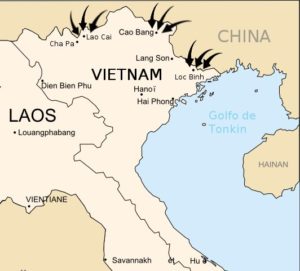
Southern divisions mobilized to attack vietnam, were from the Kunming, Chengdu, Wuhan and Guangzhou Military Regions, with command HQs in Kunming and Guangzhou, as forces were to attack simultaneously from the west and east on the mountainous border. In total, 600,000 troops were mobilized, but only 200,000 entered the country. Facing this onslaught, official Vietnamese figures were 70,000 troops using a large variety of armaments, including those captured from the US and ARVN. They were all brought northwards, but 200,000 were kept in reserve around Hanoi. The Chinese attack was mostly performed by infantry, supported with a few few tanks comparatively, about 200 Type 59, Type 62, and Type 63 tanks. This was explained by the bulk of the armoured forces being massed to the soviet border, and the mountainous terrain, not favourable for armoured warfare. The Vietnamese HQ was however able to mobilize forces in Cambodia, southern Vietnam and central Vietnam and send them to the north, including air support from an entire division and three air regiments. They were favoured by a difficult terrain they knew well, and their recent military experience, but losses were about the same, if not superior, as local militias were deployed.
It should be noted that the USSR provided intelligence and equipment support for Vietnam via a massive airlift operation. In addition to infantry armament and artillery, no less than 400 tanks and armored personnel carriers (APCs) came from USSR and naval vessels were deployed also to prevent possible Chinese landings on the coast or blockade attempt. After the Battle of Lạng Sơn, Dong Dang, Lao Cai, and Cao Bang, in March, the Chinese retired, as Peking estimated the “punitive expedition” had reached its goal. Casualties figures on both sides are still disputed today, the Vietnamese estimated to have inflicted 62,000 casualties to the PRC and destroyed/captured 420 tanks and APCs. Modern estimates give about 26,000 Chinese killed, versus 20,000–30,000 killed on the Vietnam side in 3 weeks and 6 days. Despite all these hardships, Vietnam (which first kingdom dated back from the 7th century BC) has now a booming economy and a military fed by 8% GDP, with regular militia drills, and it is estimated as much as 5,000,000 would be mobilized in case of war, comprising a professional core of 450,000.
Read More/ Src
https://weaponsandwarfare.com/2015/11/29/french-navy-1946-1954-vietnam/
https://www.warboats.org/yabuta.htm
https://www.warboats.org/seafox.htm
http://www.netmarine.net/forces/operatio/indo/lcm.htm
http://www.navypedia.org/ships/usa/usa_boats.htm
https://en.wikipedia.org/wiki/Category:Vietnam_War_naval_ships_of_the_United_States
https://commons.wikimedia.org/wiki/Category:Riverine_warfare_in_the_Vietnam_War
https://commons.wikimedia.org/wiki/Category:Patrol_Boat,_River
https://en.wikipedia.org/wiki/Vietnam_War
https://www.sikorskyarchives.com/Gunboat.php
https://www.history.navy.mil/research/publications/publications-by-subject/war-in-the-shallows.html
Commemoration 50th anniversary (pdf)
https://www.history.navy.mil/research/library/online-reading-room/title-list-alphabetically/n/the-navy-in-the-cold-war-era-1945-1991.html
https://en.wikipedia.org/wiki/Category:Vietnam_War_aircraft_carriers_of_the_United_States
Ships of the USN in Viet-nâm
During this conflict (1965-74), which remained a gaping wound in the collective memory of a whole generation of Americans currently in command of the country, the veterans remember having boarded small plastic vessels that were massively used on the Mekong and its many tributaries (see next chapter, about the brown navy ships). However the USN provided up to 60% of the air cover over Vietnam. Practically all cruisers, and aircraft carriers in service in 1965-75 served in Vietnam. USN disengagement started in 1972, and from there, support to the ARVN became very limited, culminating with the fall of Saigon which put an end to this conflict from the American perspective. However, in Cambodge, the Khmer Rouge took power and dragged the country into a long ideologic nightmare while in 1979, China attacked Vietnam for three weeks before retiring (see later). This was the last chapter of this very long and painful history of the most bombed country on earth, and a tribute to an immensely brave and resilient population, attacked successively by three great powers and winning each time.
Aircraft Carriers in Vietnam:
Essex class carriers:
Some ships in the class would serve until well after the end of the Vietnam War:
-USS Yorktown: A 1964-1965 deployment with special operations in the South China Sea and ASW patrols, and air strikes inland. She concluded her tour of duty on 7 May 1965.
-USS Intrepid: April 1966-February 1969, three Vietnam deployments with Air Wing 10.
–USS Hornet covered the evacuation of Vietnamese from South Vietnam, during her late deployment with the 7th Fleet for operations on the South Vietnam coast.
–USS Ticonderoga was one of the most active in Vietnam. She made four peacetime deployments to the western Pacific from 1958, and launched more than 7,000 sorties in 1965-67.
–USS Hancock started her tour of duty in 1965, and she was deployed each year until 1975, gaining an impressive service record there.
–USS Bennington final seven years of active service included four assignments with the 7th Fleet in Vietnam from 1964 to 1868.
–USS Boxer (CV-21) was used as a transport during the war.
–USS Bonhomme Richard was for the anecdote a flagship, under command of Admiral George Stephen Morrison, father Jim Morrison, in the Gulf of Tonkin during the incident of August 1964 although the event rather involved the Ticonderoga. She made five Southeast Asia combat tours in six years, battling North Vietnamese MiGs on many occasions with CVW-21 and CVW-5 until her 1970 deployment, and she was decommissioned in July 1971.
–USS Kearsage: She started her first tour in July 1964 and returned in June 1966 until the end of the year.
-USS Oriskany: In April 1965 she joined for WestPac at Subic Bay, covering USMC landings to help the ARVN in north Vietnam. She deployed Air Wing 16, gaining a Unit Commendation for exceptionally meritorious service with 12,000 combat sorties. She returned in May 1966, and “Dixie Station” off South Vietnam, “Yankee Station” in the Gulf of Tonkin and 7,794 combat sorties, until a grave fire on 26 October 1966.
–USS Princeton: Started on October 1964, and transported there Marine Aircraft Group 36 in 1966. She served there with interruptions until 1968.
–USS Shangri-La: She was deployed with the second Fleet and Sixth Fleet assignments in 1965, but on 30 June 1969, she was redesignated an antisubmarine warfare carrier (CVS-38) and spent seven months launched combat sorties at Yankee Station in 1970.
–USS Valley Forge: On 2 August 1964, the Gulf of Tonkin started and Valley Forge was mobilized, carrying marines and aircraft in the South China Sea in late 1965. She participated in many operations until 1969 and was decommissioned shortly after.
-USS Philippine Sea was the only carrier never deployed in Vietnam.
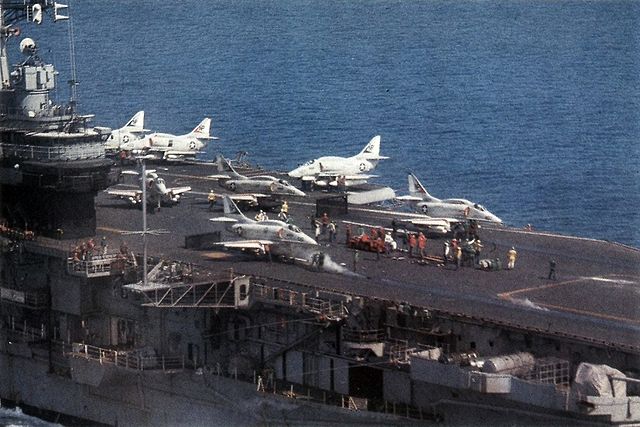
A4F launched from USS Hancock in 1969
Escort carriers: USS Thetis Bay
-Previous Independence and Saipan class light carriers and Casablanca, Commencement Bay classes escorts were discarded 1947-59, scrapped in 1959–61 but a single carrier of the Casablanca class, USS Thetis Bay was heavily modified into an amphibious assault ship called LPH-6 in 1955-56, and although she evacuated civilians of Taiwan after the disaster, using her HMR(L)-261’s (USMC) 21 large troop-carrying helicopters, she was never sent in Vietnam and was scrapped in 1964.
Midway class carriers:
All three of the Midway class started deployments in Vietnam, USS Coral Sea was deployed in Tonkin six times, USS Midway three, and Franklin D. Roosevelt one combat deployment.
Forrestal class carriers:
–USS Forrestal started her campaign in the Gulf of Tonkin from 29 July, but on 29 July 1967, a Zuni rocket misfired and impacted a parked, armed A-4 Skyhawk, the fuel tank caught fire, causing a massive fire, killing 134, injuring 161, and destroying 21 aircraft. This put an end to her short Vietnam tour.
–USS Saratoga made her tour of duty in 1970, deployed from Subic Bay and she served from 1972 as a “Multi-purpose Aircraft Carrier” until 7 January 1973.
–USS Ranger started her tour of duty just after the gulf of Tonkin incident, from 6 August 1964, and she ended her campaign on 18 December 1972, with Linebacker II.
–USS Independence also started on 10 May 1965, for a first campaign of seven months, and 100 days in the South China Sea, and others until 1967.
Kitty Hawk class carriers:
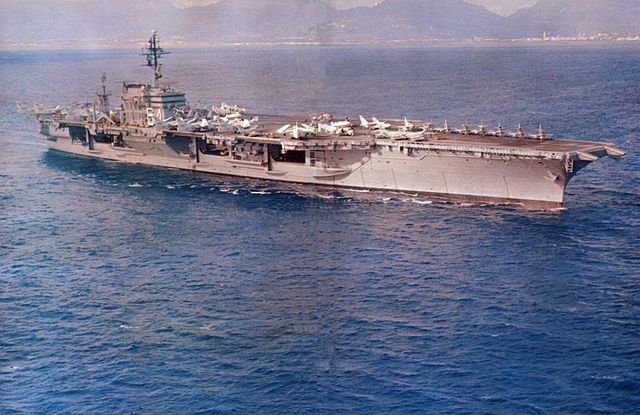
-USS Kitty Hawk was awarded the Presidential Unit Citation for “exceptionally meritorious and heroic service” from 23 December 1967 to 1 June 1968 and from 15 January 1969 to 27 August 1969 in Southeast and Northeast Asia. She served there in 1965-69.
-USS Constellation was deployed from 5 May 1964, relieved Kitty Hawk in the Gulf of Tonkin on 8 June, and operated there with CVW 14, flying armed photo reconnaissance missions over Laos and made other deployments until May 1970, her fighters shooting down several NVA Migs.
-USS America made three deployments starting in 1968, until the start of 1973 the end of the conflict.
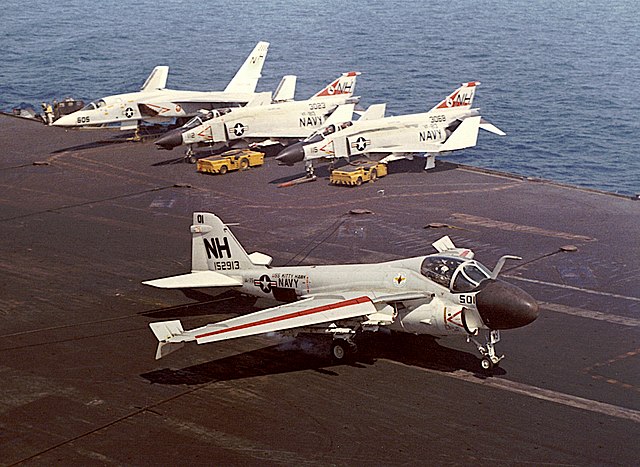
An A-6A landing on USS Kitty Hawk in 1968
USS Enterprise:
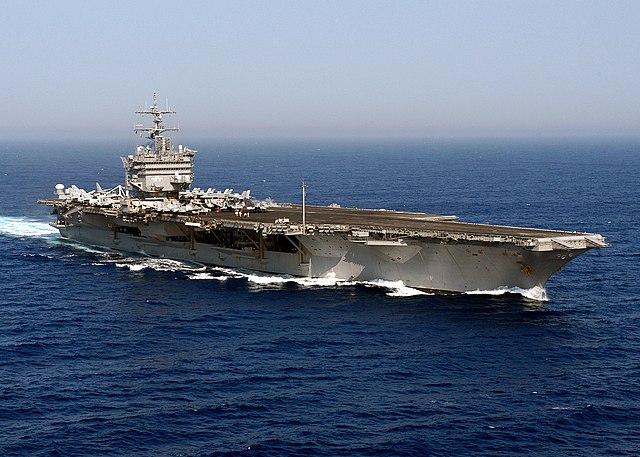
In November 1965, USS Enterprise joined Seventh Fleet at NAS Alameda (California) before commencing operations in Vietnam on 2 December, the first nuclear-powered ship to do so. The first target of her air group was Biên Hòa City. She was part of Division Three, with Air Wing 9 aboard, escorted by Bainbridge, Barry, Samuel B. Roberts. She launched 125 sorties the first day, and with 165 strike later made a world record.
She went on with TF77 in the Gulf of Tonkin as flagship (Rear Admiral Henry L. Miller), throughout 1966 and when departing on 20 June 1967, 13,400 battle missions has been performed by her air group in 132 combat days. She was overhauled back home, visited Sasebo in 1968 at her return, standing back after the NK attack and captured of USS Pueblo and returned in 1969 to Vietnam for a deployment which was also tragic: On 14 January 1969, with Benjamin Stoddert and Rogers as escorts, another of these infamous MK-32 Zuni rockets under a F-4 Phantom overheated and exploded, setting off fires and additional explosions across the flight deck, brought under control quickly but 27 sailors died, 314 sailors injured more or less severely. 15 aircraft were destroyed, and this event forced the carrier to return to Pearl Harbor for primarily repairs, after which she returned to the Tonkin Gulf. After a great overhaul back home, she returned to Vietnam and performed 2,001 strike sorties by 30 July 1971. She would return again in 1972 for Linebacker II, and returned home after a cseasfire was declared in January 1973.
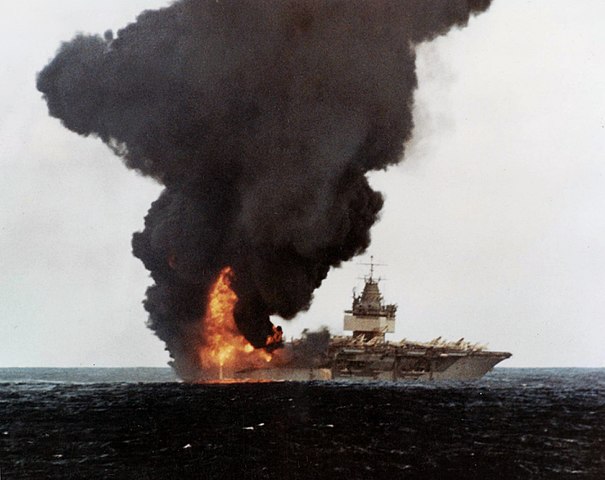
The great fire on USS Enteprise in 1969. These Zuni rockets became very controversial after having provoked three massive fires on board USN carriers, Forrestal being the worst. The use of WW2 bombs did nothing to improve safety, such was the level of the “consumption” of ordnance in Vietnam.
Conventional warships in Vietnam
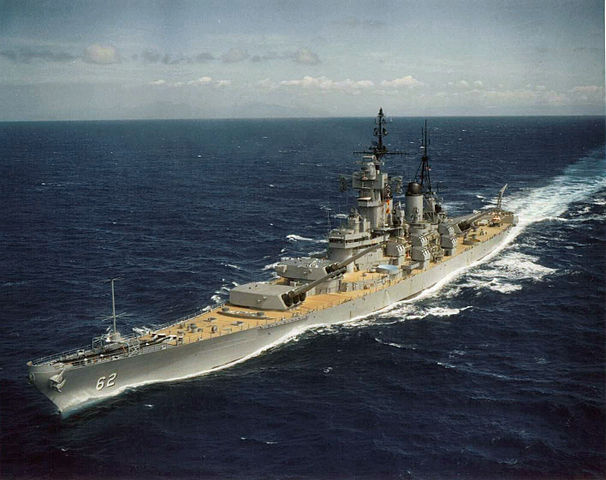
-USS New Jersey: In 1968, New Jersey made a tour of duty in Vietnam.
Operation Rolling Thunder starting in 1965 showed amounting air losses and in May 1967 Secretary of Defense Robert McNamara authorized a study to get USS New Jersey reactivated, her long range guns providing an alternative to ever more riskier bombings. In August, decision was made to recommission her “for employment in the Pacific Fleet, augment the naval gunfire support force in Southeast Asia”. USS New Jersey was indeed of all four in better condition. She would receive an extensive overhaul and modernization. The old AA was removed, improved electronic warfare installed and a new radar. She was recomm. on 6 April 1968 at Philadelphia Naval Shipyard, with Captain J. Edward Snyder as her first new captain in many years; With her machinery completely cleaned and prepared, her 6-hours long sea trials saw her topping 35.2 knots.
USS New Jersey was in 1968 the world’s only active battleship, and after a stop in California to receive 16 inch shells and powder tanks by helicopter at sea she set off for off Oahu in September, gun-trained on the 17th parallel and fired her first 29 shells on PAVN targets near the DMZ. Operations went on in 1969, dealing with bunkers and fortifications in and out of the DMZ, depots and other objectives like the Vinh caves, Hon Matt Island or in close support of various units. When she departed for Japan for maintenance, she had fired 5,688 rounds and even 14,891 5-inch shells, proving that a battleship still can bring unprecedented firepower without much risk. A comprehensive report was written after she retired again for reserve, on 17 December 1969. It was not forgotten under the presidency of Ronald Reagan and his 600-strong ships fleet program and the threat of new Soviet cruisers like the Kirov. All four battleships would be reactivated again, after a total reconstruction, soldiering last in the 1991 gulf war.
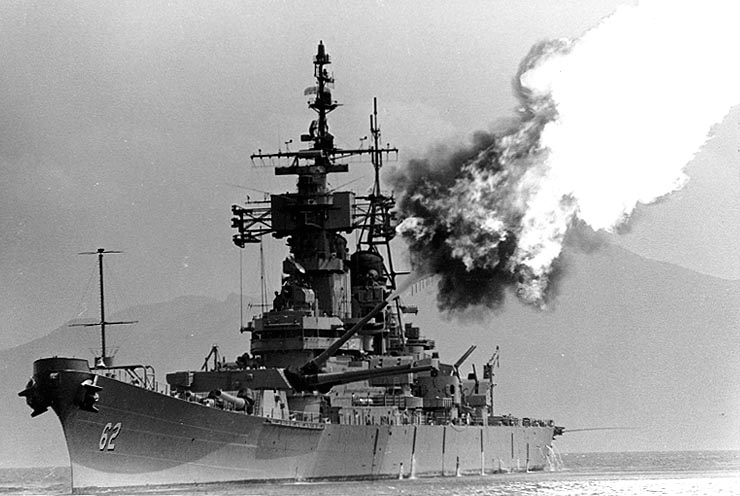
–USS Saint Paul (CA-73): The only Baltimore class cruiser which provided gunfire support, commissioned continuously for 26 years. She was deploye din the far east in late 1963, through summer 1964, in her wartime all-gun configuration. Apart a movie with Jothn Wayne “In Harm’s Way” she served with Westpac, 7th Fleet to operate off North and South Vietnam for gunfire support. She returned home in 1969. It was her last mission as she was deactivated in 1970.
Missile cruisers and destroyers in Vietnam
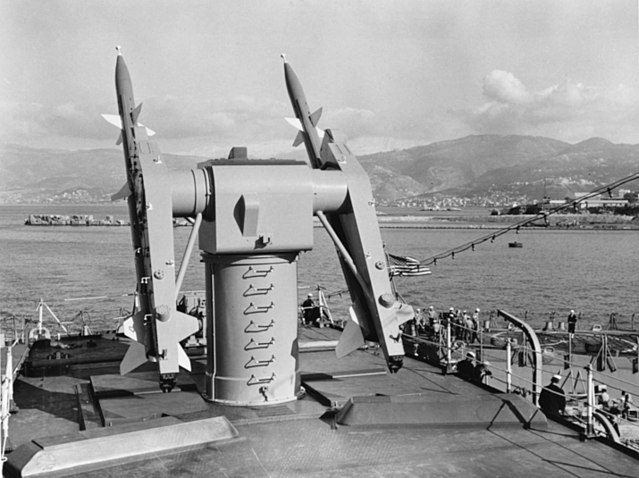
RIM Terrier in 1966
Converted missile cruisers
-USS Galveston (CL-93) served in 1965 in the Gulf of Thailand to the Gulf of Tonkin.
-USS Topeka (CL-67) was deployed in Vietnam in 1965 and her six-month deployment ended on 28 May 1966.
-USS Boston (CA-69) was deployed in 1967-68, part of Naval Gunfire Support Task Unit 77.8.9 and Sea Dragon operations
-USS Canberra (CA-70) was deployed to Vietnam five times from 1965 to 1969
-USS Newport News (CA-148) in 1967 participated in a six-month deployment as flagship of ComCruDesFlot 3. and Operation Sea Dragon. She returned in 1969 and 1972.
-USS Oklahoma City (CL-91). Started in 1964, and was deployed regularly until 1975.
-USS Galveston (CL-93) was deployed in 1965 and 1968-69.
-USS Providence (CL-82). In 1968, she provided gunfire and support for Operation Formation Star.
-USS Oklahoma City (CL-91) served in 1965, 1968 and 1969 at Yankee Station and in 1972, where she was the first USN warship to send a Talos RIM-8H anti-radiation missile to destroy a North Vietnamese mobile air control radar van.
Missile cruisers
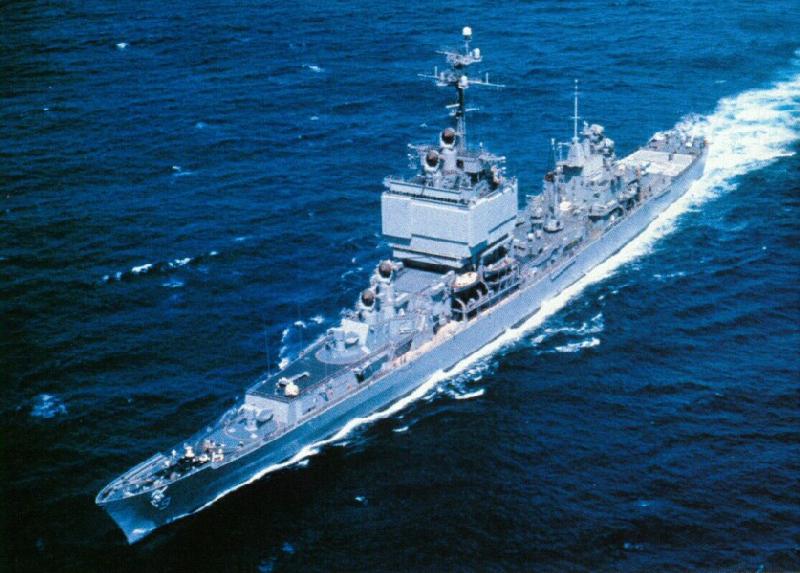
–USS Long Beach (CGN-9): The only nuclear-powered cruiser deployed there, Long Beach departed on 7 November 1966 from Long Beach, wehere she served as a Positive Identification Radar Advisory Zone (PIRAZ) and “sanitize” returning US strike aircraft to catch with “bandits” hiding amongst these. Shoot down multiplied in 1967 and she returned in action on 26 April 1972.
–USS Dale (DLG-19), a Leahy class cruiser, comm. in 23 November 1963, she made five deployments to the Western Pacific over the next seven years. Between 1965 and 1970, Dale’s Seventh Fleet tours included participation in Vietnam War operations, during which she rescued several American aviators in the Gulf of Tonkin.
–USS Gridley (DLG-21), another Leahy-class cruisers. She escorted the USS Constellation off Vietnam after the Gulf of Tonkin incident, and remained on station for coordination and communications.
–USS Reeves (DLG-24): A Leahy-class cruiser operated in support of Allied operations in Vietnam, as an anti-aircraft warfare (AAW) picket, with TG 77.3 and USS Oriskany, and later USS Midway in 1965-68.
–USS Sterett (CG-31), Belknap class which started on 31 July 1968, and used as PIRAZ. She served until 1972.
–USS Richmond K. Turner (DLG-20/CG-20), Leahy class, also made a tour for duty, starting as a Search and Rescue Destroyer in the Tonkin Gulf in September 1965. She also served in 1968 and 1970.
–USS Fox (CG-33), a Belknap class cruiser commissioned on 8 May 1966, was sent in Vietnam assisting in aircraft operations, shore operations and stations off the coast of North Vietnam and she monitored the activity of 200 Navy and Air Force missions, directing F-4 fighters to interceptions over Hanoi for the first time during the Vietnam War. For the first time by a shipboard controller. She had kills herself in 1972.
–USS Bainbridge: Second nuclear-powered cruiser in action in Vietnam, she was commissioned in 1962 called a “nuclear Frigate”, and “fleet escort” according to the task-force based terminology of the USN at that time. She was deployed in Vietnam in 1966–67, 1969, 1970, 1971 and 1972–73.
–USS Truxtun was the third nuclear-propelled cruiser active during the Vietnam war (comm. 1967), and this was her first tour of duty in 1968, she operated in “Yankee Station” in the Gulf of Tonkin, for SAR missions and as PIRAZ. She returned in 1969 and a third deployment in 1971.
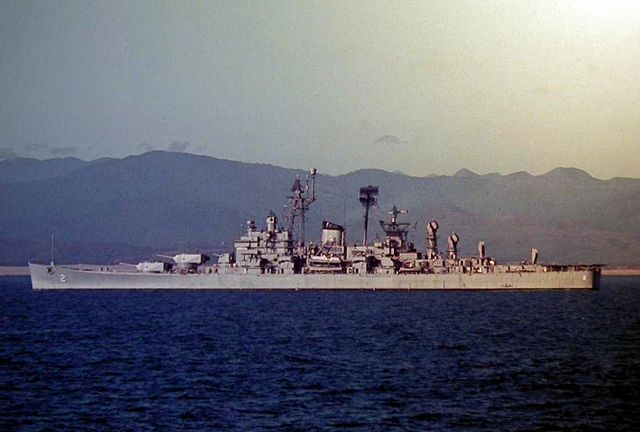
Destroyers
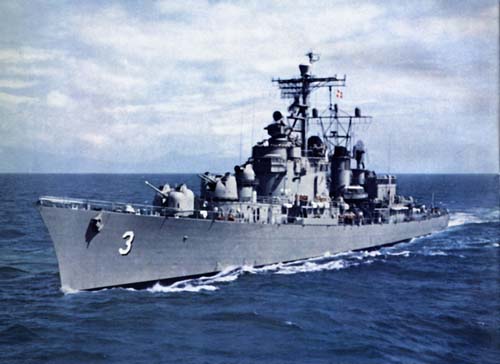
USS John Mc Cain (Mitscher class) in the 1960s
Fletcher class: As the Korean War broke up, many were returned to active duty and 39 refitted and modernized, main armament reduced as well as a torpedo tube bank removed, to accommodate a new ahead-throwing weapon (Weapon Alpha), trainable Hedgehogs and others, plus new electronics. 12 were redesignated escort destroyers (DDE) converted for anti-submarine warfare and later reverted to destroyer (DD) designation in 1962. So about 20 served in Vietnam.
Gearing class: Most underwent FRAM I upgrades 1960-65 and FRAM II, for 16 ships 1961-64. They provided significant gunfire support in the Vietnam War, escorts for Carrier Battle Groups and Amphibious Ready Group. DASH was withdrawn in 1969 and those lacking ASROC were disposed of in 1969-74. The others were decommissioned and transferred to foreign navies 1973-80.
Sumner class: Converted to FRAM II standard, and provided significant gunfire support in the Vietnam War, escorts for Carrier Battle Groups and Amphibious Ready Groups, other being transferred to the Naval Reserve Force, training Naval reservists.
Forrest Sherman class: Comp. 1955-59 these 18 destroyers were for some rearmed with Terrier and rebuilt/modernized in the 1960s. USS Turner joy, Barry, Decatur, Manley, Du pont, Bigelow, Mullinix, Hull, Edson, Somes, Morton, Parsons, and Richard S. Edwards served in Vietnam.
Charles F. Adams class These 23 state of the art missile destroyers were completed in 1960-64 and also served, for some, in Vietnam, as well as the destroyers of the Royal Australian Navy. They shot down MiGs during her deployment.
Mitscher class: These four modern fleet escorts (Destroyers) denominated DL 2-5 were completed in 1953-54 to carry the Weapon Alfa ASW, but their designed went back to 1944. In Vietnam they were deployed also with DASH drones. Only John S. McCain made in 1961 two deployments with Seventh Fleet, spending six months off Laos and Vietnam.
Farragut class: The first ten missile destroyers of the USN, armed with Terrier and ASROC. Completed in 1960-61, USS Coontz spent the early part of her career in the Pacific Ocean, participating in four tours of duty during the Vietnam War. USS King also in 1965, Mahan in 1962-65, Pratt in 1967, Preble in 1961-68 (actually the most active there).
Amphibious & assault ships in Vietnam
Iwo Jima class Helicopter Carriers (1960)
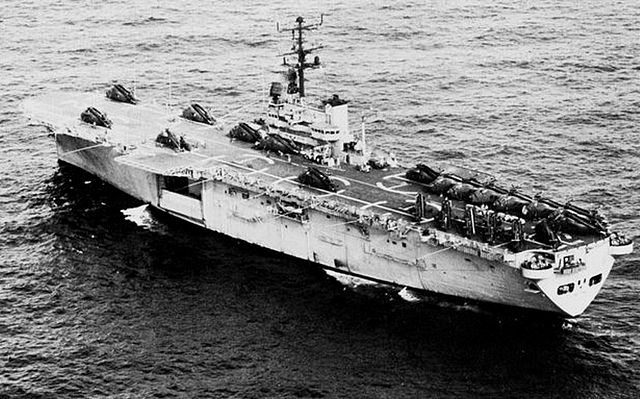
The culmination of a long USMC reflexion about amphibious support, these vessels were in effect Helicopter Assault ships, tailored around this new way to carry troops in the field. They arrived at the best moment for the Vietnam war, participating actively indeed until 1973. There were seven ships (LPH-2,3,7,9,10,11,12). They were the product of a reflexion about a possible nuclear tactical strike on approaching landing crafts on a beach, as an airborne, faster alternative. The ships could not operate landing crafts themselves but had a hangar to operate up to 20 helicopters (1800 marines) including the heavy Sea Stallion and Chinooks. They were completed in 1960-69, and all participated in various deployments and operations in Vietnam (details to come with the article).
Thomaston class Dock Landing Ships (1954)
Eight LSDs were built with an helicopter pad at the rear and extensively used in Vietnam (Details to come).
Raleigh class Dock Landing Ships (1962)
Three LSDs were built with a large helicopter deck aft, also deployed in Vietnam (Details to come).
Anchorage class Dock Landing Ships (1969)
five LSDs very close to the Raleigh, also deployed in Vietnam (Details to come).

Terrebone Parish class Tank Landing Ships (1952)
Fifteen LSTs were built with a large forward upper deck, possibly used to launch a light reconnaissance aircraft, also deployed in Vietnam (Details to come).
Newport class Tank Landing Ships (1968)
Twenty LSTsof a brand new generation, with a central island and two landing areas fore and aft, also deployed in Vietnam (Details to come).
Assault Ships
This includes the Tulare, Paul Revere and Francis Marion (1953), Charleston cargo assault ships (5 ships, 1967-69) (Details to come).
Landings Crafts in Vietnam
The main variant was the improved LCM(6) – see later. More details to come.
Misc. vessels in Vietnam
Command ships in Vietnam
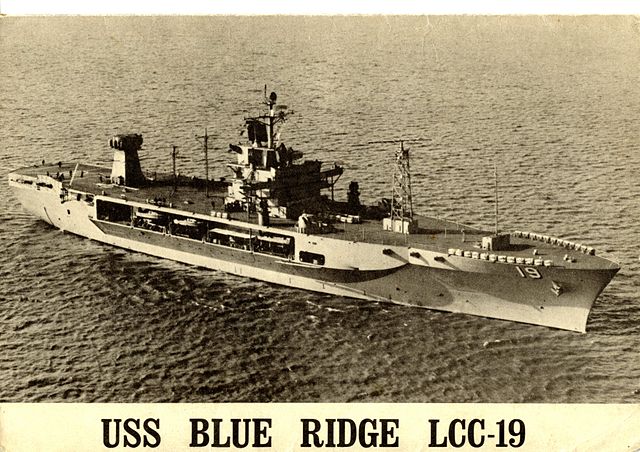
During this era, the USN had three specfifically built command ships, in addition to the converted missile cruisers which had these capabilities already. These were:
-USS Northampton (1951), former Baltimore class cruisers completed with a very large Command and Control Center ad the massive SPS-2 radar. Not deployed in Vietnam.
-USS Blue Ridge (1969): Tailored, modernized version with helipads and modern electronics. She was present in march 1972 in Okinawa for exercise Golden Dragon, when North Vietnam invaded South Vietnam across the DMZ (Easter Offensive) and stayed on site to procure distant intelligence and C-in-C in the gulf of Tonkin.
-USS Mount Whitney (1970), same class as above, not deployed in Vietnam. Two more ships were former carries converted, USS Wright and Arlington, not deployed either.
The RAN in Vietnam
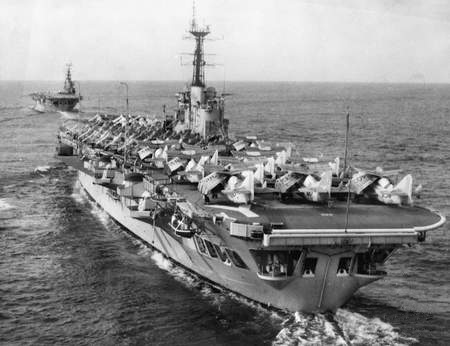
HMAS Sydney and Melbourne in the 1960s
HMAS Sydney (R17):
After a career of Fast Troop Transport between 1958 and in 1964-1965 to Vietnam and Southeast Asia, before participating more directly in support of Australian troops* in Vietnam in 1965–1972. She made twenty-five voyages in support of the 1st Australian Task Force.
*carried by HMAS Boonaroo and HMAS Jeparit.
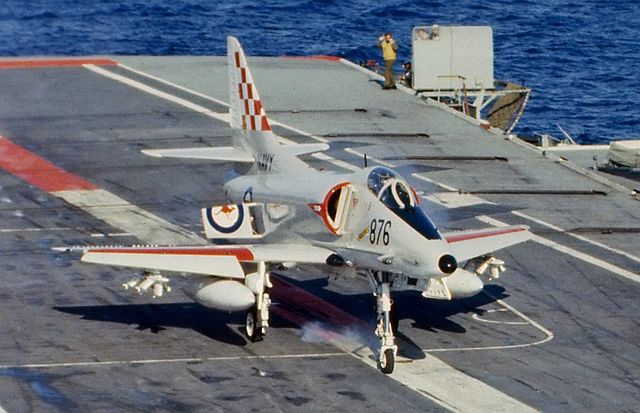
Australian F-4 Skyhawk landing on HMAS Melbourne.
Perth class destroyers:
These modern Sumner class missile destroyers served in Vietnam: HMAS Brisbane (D 41), HMAS Hobart (D 39), HMAS Perth (D 38). Also HMAS Vendetta (D08) of the Daring class also served in Vietnam.
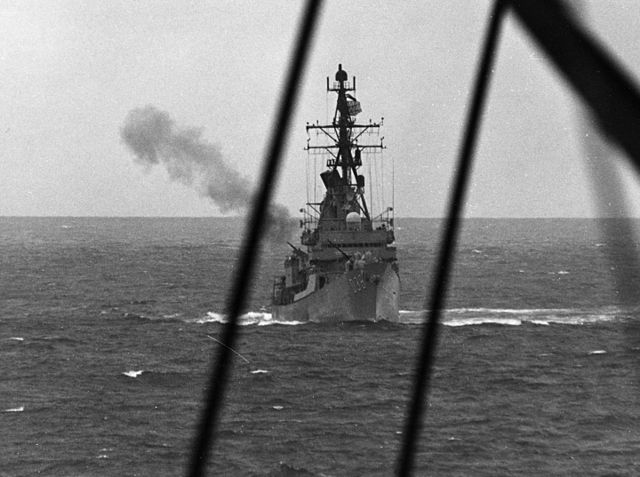
Other escorts
To cover the carrier task groups against any ASW threat, many escort ships were also deployed there. A few modernized DDEs from WW2, but mostly:
-Dealey class ocean escorts (1959)
-Bronstein/Garcia/Brook class, completed 1963-65 also served for some.
-Knox class Frigates: Completed 1969-73, some made apparitions at the end of the conflict, covering observation forces as the USN disengaged from 1972.
USN Submarines in Vietnam
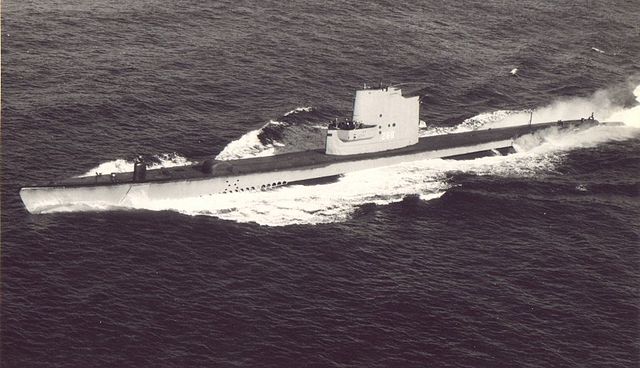
Although it would be too long to swelve in detail about the deployment of each unit, USN subs were indeed deployed in Vietnam, from the unexpensive old “fleet snorkel” of WW2 to the more modern 1950-60s SSGs (conventional attack subs) and early SSNs. They patrolled mostly to acquire intelligence, and track down merchant traffic from the USSR or China, enforce the blockade of North Vietnam. It was not without risks, as the NVN deployed sub-chasers and patrol boats all armed with depht charges. No USN sub was lost in Vietnam.
The class concerned were:
Balao, Barbel, Gato-class subs (GUPPY Fleet Snorkel conversions) such as USS Perch, Pickerel, Pomfret, Pomodon, and USS Rasher, or USS Carbonero, Menhaden, Sea Fox, Tiru, Tunny. Also with more modern Grayback-class submarines using the Regulus class missile, and some Migraine class radar pickets conversions.
Modern Conventional subs: USS Sailfish (Radar Picket), Skate (USS Seadragon, Swordfish), Tang (USS Wahoo), Tench class (USS Tang)
SSNs: Permit (USS Barb, Blueback, Bluegill, Bonefish), Skipjack (USS Scamp), and a Sturgeon class boat, USS Aspro.
Special Purpose ships
USS Belmont (AGTR-4/AG-167) A 1944 ship, Belmont-class technical research ships, basically spy ships in disguise, used in 1963 for conducting “research in the reception of electromagnetic propagations”.
USS Oxford (AGTR-1/AG-159) was about the same as was USS Jamestown (AGTR-3).
USS Flagstaff (PGH-1) was a single patrol gunboat hydrofoil with low cost and very high speed, loaned to the US Coast Guard. She made her tour of duty in Vietnam until 1970, with Tucumcari in Coastal Squadron 3, from Cam Ranh Bay.
PCF Boats
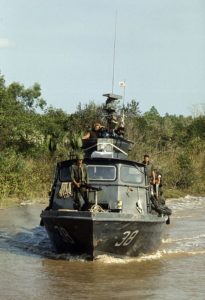
PCF 38 on patrol Cai Ngay river 1972
The “Patrol Craft, Fast” were an idea of the Naval Advisory Group branch of the Military Assistance Command (NAVADGRP MACV) staff. In their study “Naval Craft Requirements in a Counter Insurgency Environment” (February 1965) required a tailored COIN craft be designed as no readily available USN or civilian asset could be used to fill requirements.
And so, the PCF (“Swift”), steel boat was bor. It derived from a civilian model used to supply oil facilities in the Gulf of Mexico and production started right away in 1965-66, in Louisiana, by Sewart Seacraft of Berwick. In all, with the Mark I to Mark III iterations, 183 built until 1972. With a pair of General Motors 12V71″N” Detroit marine diesel engines they could cruise at 15 knots over 750 nautical miles (1,390 km) and speed up to 21 or even 24 knots and were well armed, with a turreted pair of .50 caliber M2 Browning machine guns, .3 Browning, mortar and small arms.
Specifications |
|
| Dimensions | 50 x 13 x 5 ft (15 x 4.0 x 1.5 m) |
| Displacement | 9 tons |
| Crew | 6 |
| Propulsion | |
| Speed | 20-25 knots (37-46 km/h) |
| Range | 750 nm (1,390 km) at 10 knots (19 km/h) |
| Armament | 3x .5 ca. M2HB, 81 mm mortar |
| Armor | None |
PBRs
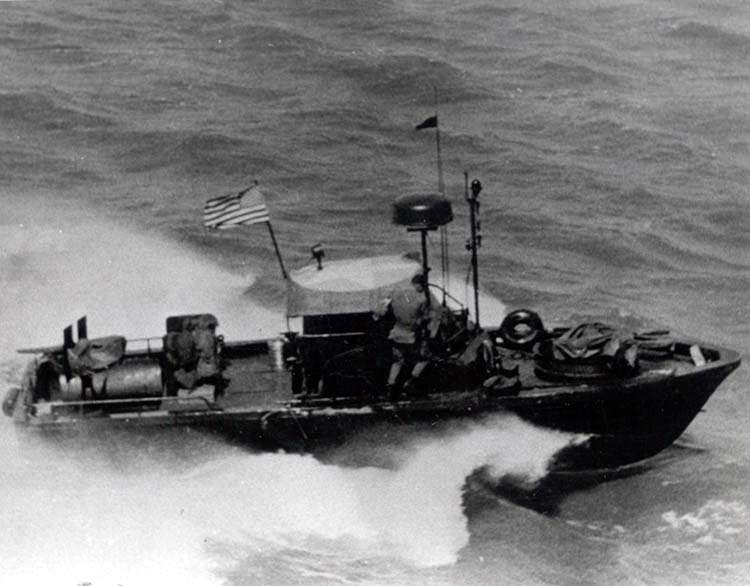
The Patrol Boat, River (nicknamed “plastic bugs” and others) were indeed not entirely plastic-built, but mostly fiberglass-plastic. This made them light, and they were better armed, but slower than the PCF. Built en mass from 1966 to 1972 they best represented and summarized USN riverine warfare in Vietnam. Many were also exported. In all, 487 were used in Vietnam, most of these still used by the ARVN naval riverine force in 1972-75 and afterwards. They were propelled by two 180 hp (115 kW) Detroit Diesel 6V53N engines, each driving a Jacuzzi Brothers 14YJ water pump-jet with thrust buckets for reverse thrust. They were light (7-9 tons) and could be brought to work by planes or helicopters. PBR Mark II was an all-out improvement, longer, larger, with improved drives to reduce fouling and aluminum gunwales to resist wear. After 1972, they ended with Southeast Asian countries and had a 1990s inheritance in the aliminium-built Stinger class deposed by a transport in a C130 Hercules.
Specifications |
|
| Dimensions | 31/32 x 10.5/11.5 x 2 ft (9.8 x 3.5 x 0.61 m) |
| Displacement | 8.9 ton |
| Crew | 4 |
| Propulsion | 2 × 180 hp Diesel/JB-14YJ water pump-jet. |
| Speed | 28.5 knots (53 km/h 32 mph). |
| Armor | Ceramic armor shields, ballistic blankets |
| Armament | twin M2HB .50, single M2HB two M60 7.62 mm, 40 mm Mk 18 GL |
RPCs
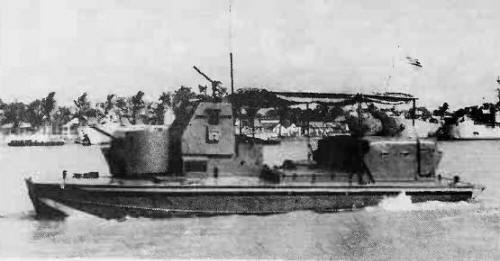
RPCs were derived from LCVPs, but criticized as beingr slow, prone to mines blast with their welded-steel hulls and poorly armed. According to various sources 27 or 34 (Conways) were built in 1964, and resold in 1972-73 to Thailand and South Vietnam. 27 boats were presumably built by Peterson Builders, Sturgeon Bay, and Birchfield SB, Tacoma.
These displaced 16 tons, for around 11 meters long with two diesels, and armed with one or two M2HB Browning Heavy Machie Guns and M60 Machine guns behind shields.
Specifications |
|
| Dimensions | ???? (10.9x 3.4x 1.10 m) |
| Displacement | 16 tons |
| Crew | 6 |
| Propulsion | 2 shafts GM marine diesels 300 hp? |
| Speed | 16 knots?/td> |
| Range | Unknown |
| Armament | 1 or 2 0.5 cal Browning M2HB, 2 M60 LMG |
PBs
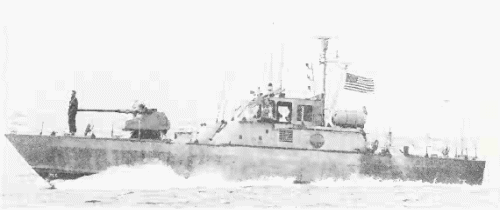
PBs were generally enlarged “Swifts”. A total of 200 were built in 1965-73, some for civilian use and others for export. Only 36 ended with the US Navy in 1973. Built at Swiftships, Morgan City, 27 were deployed in Vietnam that year by the SVN, as ’65ft Swift type’ boats. The Mark had a twin 20 mm or quad 12.7mm mount. The Mk III designed by Peterson Builders, Sturgeon Bay (Wisconsin) was procured later in 1982. The serie went on in the 1970s-80s under various Marks.
ASPB
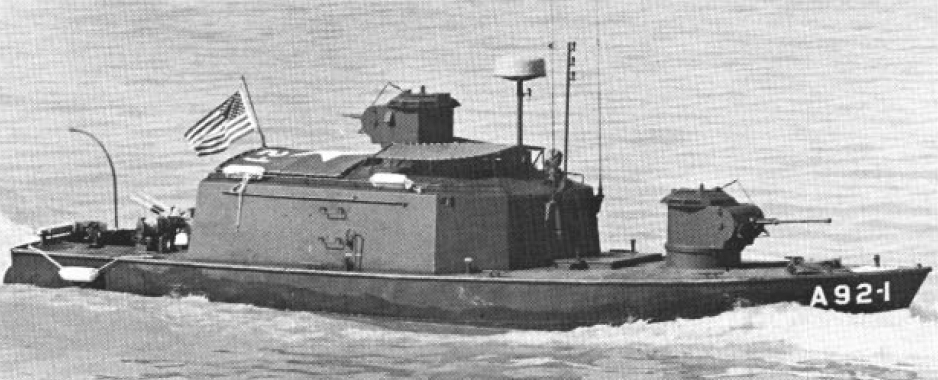
These are “Assault Support Patrol Boats” (ASPB), widely used in Viet Nam. Based like the others on landing craft of the LCM type (6), they were heavily armored (against RPGs) and equipped with turrets for twin heavy machine guns, mortars, guns and even sometimes howitzer and flamethrower. Painted in army khaki green with visible white stars, these ships escorted armored personnel carriers landing crafts and ATC armored personnel carriers (6). Their number remains a mystery, but we know that 84 were transferred to South Vietnamese in 1973 (Code Alpha);
Specifications |
|
| Dimensions | 50 ft (15 m) long |
| Displacement | 20 tons |
| Crew | 5 |
| Propulsion | 2 × 430hp GP 12V71 diesels 14.8 knots |
| Range | 130 nautical miles (240 km; 150 mi) |
| Armament | 2x Mk 48 turrets 20 mm/.50 cal HMG, 2x M60/Mk 21 MG, .50 cal HMG, 81mm mortar |
Vietnam Monitors
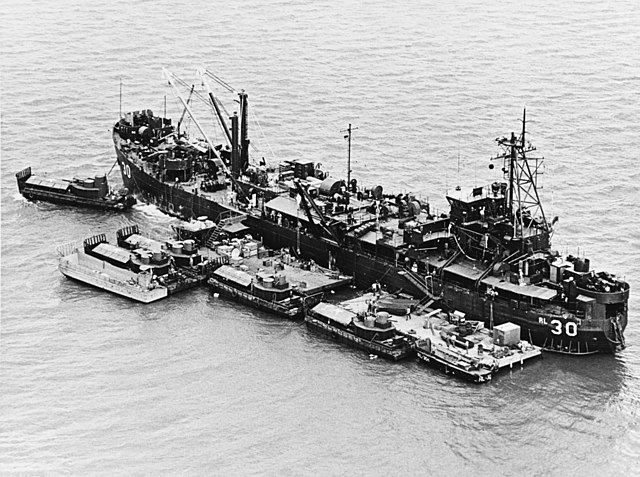
During the Vietnam War, the Brown Water Navy needed, and obtained, heavily protected and armed combatants for the “hottest” sectors. Monitors made a come back after the civil war, 100 years after. They were part first of River Assault Flotilla One, made of four River Assault Divisions (RAD). RAD 91 had three monitors, RAD 92 two, RAD 111 three, RAD 112 two. Program 4 was about a 40 mm gun monitor variant, program 5 concerned eight “Monitor(H)” (for Howitzer) plus six Monitor(F) (or Flamethrower). They were all converted from classic WW2 56-foot (17 m) Landing Craft Mechanized (LCMs) Mark 6, reaching 60 feet (18 m) after convesion for 17 feet (5.2 m) wide and with a 3-1⁄2 feet draft (1.1 m). Their two propellers were driven by two Gray Marine 64NH9 diesels, enough for 8.5 knots (15.7 km/h; 9.8 mph). The crew was about 10-12, and they were heavily armored, up to 10 tons total, to deal with heavy machine guns round and RPGs.
They had an impressive arsenal to deal with any threat, with cannons, machine guns or all calibers and grenade launchers plus a mortar. The basic version (1st gen. Monitor) had a single 81 mm mortar, a 40 mm Bofors auto-cannon, a 20 mm Oerlikon cannon, two Mk 18 grenade launchers, three M79 grenade launchers, two .50 cal. M2HMB heavy machine gun and four 7.62 mm M1919A4 or M60 machine gun. In all about 50 were built, as 49 were listed in service by 1973 with the South Vietnamese navy.
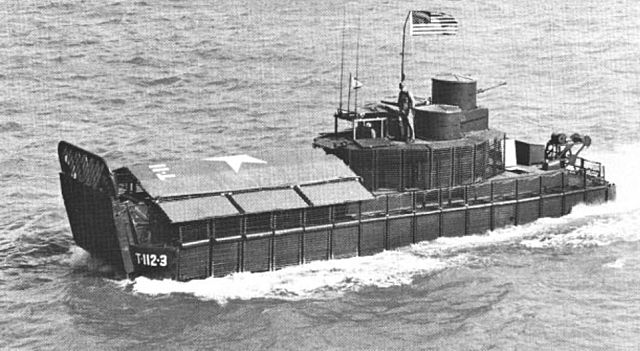
Armoured Troop Carrier (ATC) based on the LCM(6)
LCM (6)
Standard landing craft. Code “mike”. Basic LCM(6) were lenghtened LCM(3) converted in Vietnam as armoured troop carriers (ATCs or “Tangos”), Monitor(F) or “Zippos”, Monitors(H) artillery support version and the Monitor(C) “Charlie” command variants. The basic LCM(6) had the following specs:
Specifications: LCM(6) |
|
| Dimensions | |
| Displacement | 64 tons |
| Crew | 5 |
| Propulsion | 2 Detroit 6-71 diesel engines 348 hp (260 kW) or 8V-71 diesels 460 hp |
| Speed | 9 knots (10.3 mph, 16.6 km/h) |
| Range | 130 miles (240 km) at 9 knots (17 km/h) |
| Armament | 2x .3 cal LMG |
| Capacity | 34 tons (34.6 metric tons) or 80 troops |
LCM(C)
The C stands for “combat”. It was an armored and better armed version of LCM(6), or LCA. At least 44 were converted.
The French started this process in Indochina, armoring the LCMs they received from US aid, later used by the South Vietnamese.
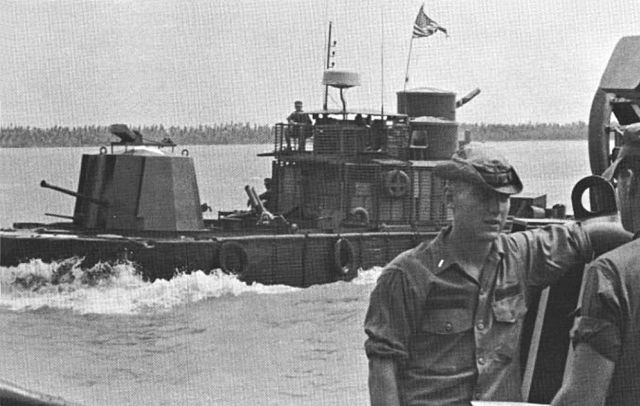
40 mm Monitor circa 1968
40 mm monitor footage (critical past)
Specifications: “Monitor” 1st Gen. |
|
| Dimensions | 18.6 m (61 ft 0 in) x 5.3 m (17 ft 6 in) x 1.1 m (3 ft 6 in) |
| Displacement | 74 tons |
| Crew | 11 |
| Propulsion | 2 Gray Marine 64HN9 diesels 160 kW (220 hp)/2100 rpm, 8.5 kts |
| Range | Circa 100 nautical miles |
| Armament | 40, 20 mm cannons, 81 mm mortar, 5 Mk 18 & M79 GLs, 2x .5 cal. 4x .3 cal. MGs |

Specifications: Monitor(F) 2 Gen. “Zippo” |
|
| Dimensions | Same but 18.4 m (60 ft 6 in) |
| Armament | 2x 20 mm cannons, 2x 200m range flamethrowers, 3x M79 GLs, 2x .5 cal. M2HB |
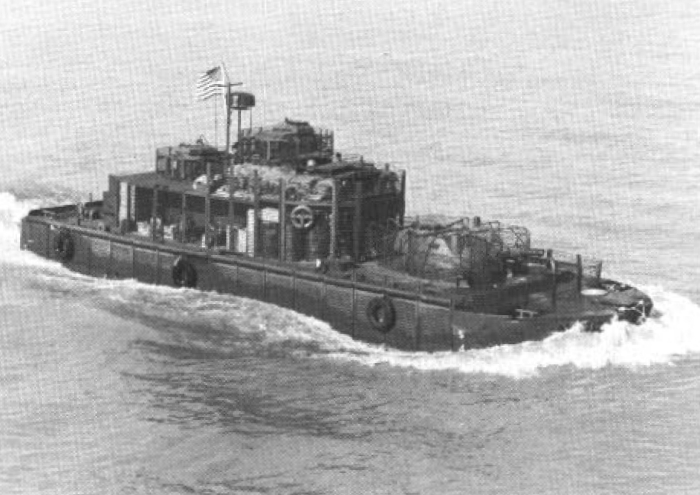
Monitor(H) in 1969. Notice the BAR armor against RPG hits
Specifications: Monitor(H) 3 Gen. |
|
| Dimensions | Same but 18.4 m (60 ft 6 in) |
| Armament | 105 mm howitzer, 2x 20 mm, 3x M79 GLs, 2x .5 cal., 7.62 mm LMG |
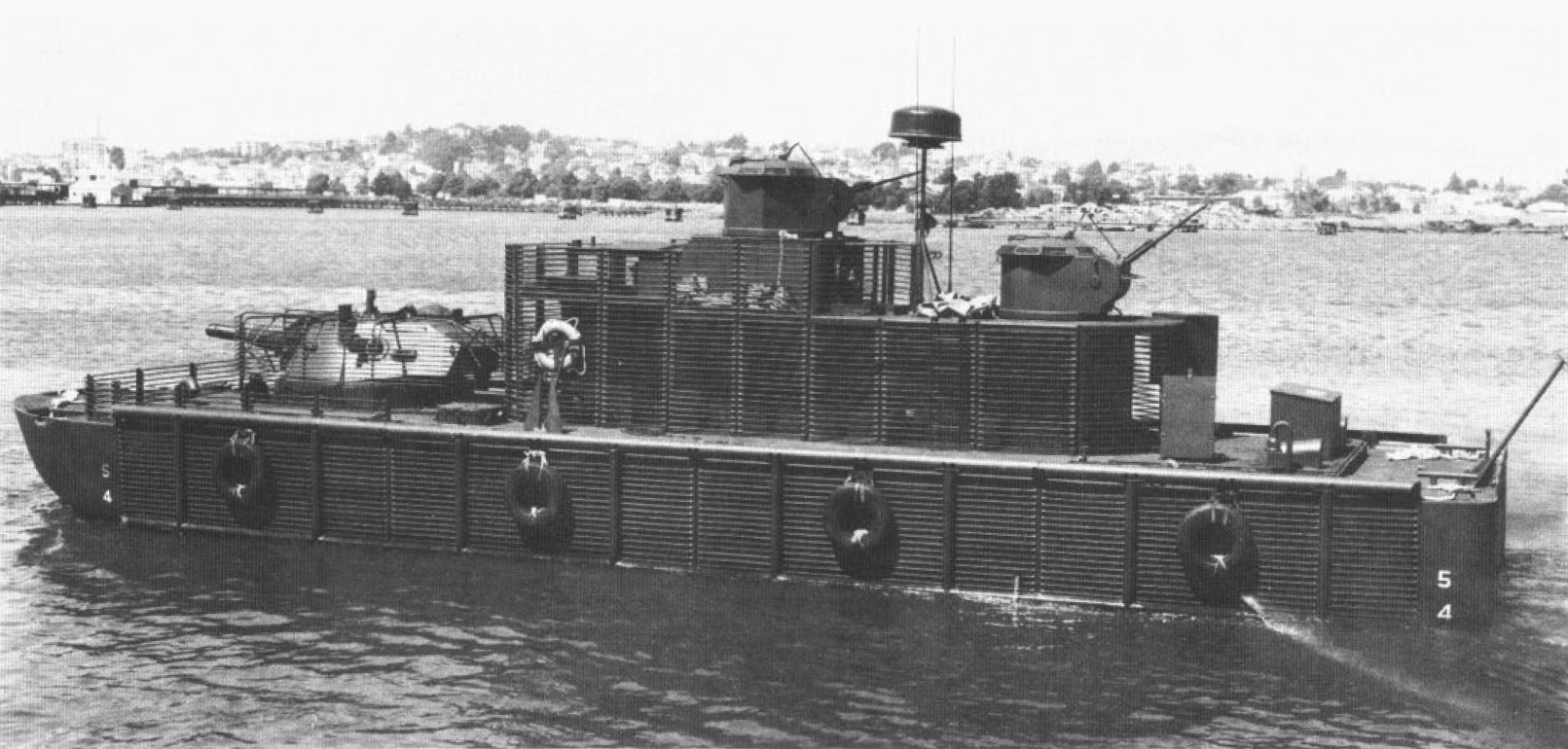
HD photo of the Monitor(H) showing its bar armor all around, including alongside the hull. The 105 mm gun turret seems to come from the LVTP(A)-7.
ATC (Armored Troop Carrier)

ATC in Vietnam circa 1968 – Notice the bar armor. Well protected and armed, it was also used by South Vietnam from 1972, and the Khmer Republic.
Based on LCM (6), these were heavily armored river vessels with roof and turret at the stern. The Codename was “Tango”.
In late 1966 as the 2nd Brigade, 9th Infantry Division was created at Vung Tau, the navy contributed by sending RIVFLOT 1 (two river assault squadrons, RAS 9 and RAS 11) and two river assault divisions, to carry and support troops in battle. This was the first assignation of the newly built ATC, a modified LCM-6. Its large well deck and drop-down ramp were covered and the whole vessel was armored with High-hardness XAR-30-type steel (proven against 14.5 mm rounds) and in addition was later given bar armor to protect them against 57 mm RPG. It also had Below-waterline hull blister for added hull protection. The RVNN used WW2 LCM(3) variants for its own river assault groups, already, so the concept was already well tested. The U.S. Army added another task, minesweeping. So it was not only armoured, but doubled as a support assault craft and troop carrier.
The LCA was 56 feet (17 m), 17.5 inches (4,4 m) wide, and 3.3 in (0.84 m) in draught, for 66 tons and capable of 8 knots in practice, fully loaded it was more 4-7 knots. Its range was 110 nautical miles (200 km; 130 mi). However a few were lost to B40 rockets. Standard armament comprised one or two 20 mm cannons, two .50-caliber M2HB HMGs, four .3-cal. LMG, two Mk 18 grenade launchers plus the infantry’s own armament, a full a platoon of 40 soldiers. In alternative, the LCA could also carry an M113 armored personnel carrier, or a 105mm howitzer and its prime mover. So by removing the cover, the latter can also be used for artillery support if needed.
Specifications: LCT |
|
| Dimensions | |
| Displacement | 66 tons |
| Crew | 5 |
| Propulsion | 2 Detroit 8V-71 diesels 460 hp |
| Speed | 6-8 knots |
| Range | 110 miles (200 km) |
| Armament | 2x 20mm, 2x .5 cal., 3x .3 cal., 2 Mk.18 GLs |
| Capacity | 30 tons, 40 troops, see notes |
By the end of 1967 a typical river assault squadron comprised:
-26 ATCs
-16 Assault Support Patrol Boats (ASPBs)
-Five Monitors (presumably, 3 standard, 1 H, 1F)
-1 Command and control boats (CCBs) “Charlie”
-1 Refueller (modified LCM)
Special versions also comprised:
-A river bank bunker demolition craft. It used a powerful jet with high-pressure water. Nicknamed the “shower” boat.
-LCA “Zippo” using a single M130 A1 flamethrower.
Conway’s gives the following conversion total:
-29 monitors (10+14+5 according to the programs)
-13 CCB (Command) “charlie”
-124 ATC (52+64+8 along the programs 4,5 and 6.)
-8 Armoured Refuellers crafts (ARC)
Hurricane Aircat
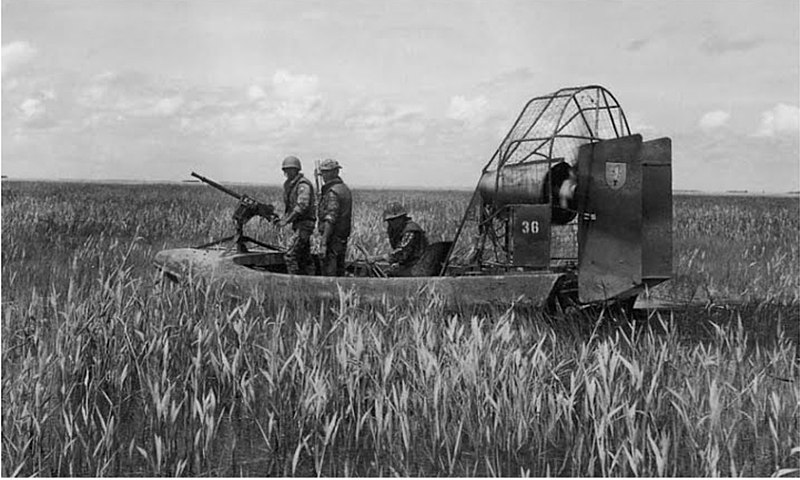
This airboat typical of Florida swamps and Louisiana bayou, was deployed in Vietnam as a riverine patrol boat by the US Army and ARVN. It was used for counterinsurgency (COIN), patrol, especially where boats could not go, in marshy areas. more than 84 were built. Very light, cheap, it was easy to carry by helicopter anywhere.
Weight: 1,150 pounds (520 kg)
Dimensions: 17 feet (5.2 m), beam 7.25 feet (2.21 m) draft 4 inches (0.10 m)
Propelled by a Lycoming O-360 aircraft engine 180 hp (130 kW), top speed 42–65 knots (48–75 mph; 78–120 km/h)
Range: 100 miles (160 km)
Crew: 5–6, armed with a single .30 cal. or .5 M2HB and infantry weapons.
PACV Patrol Hovercrafts
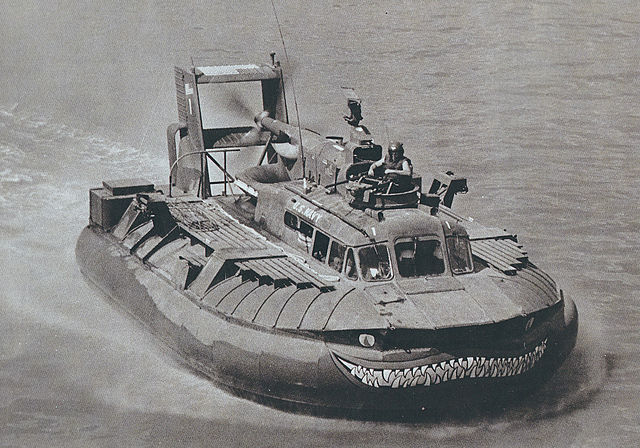
The Patrol Air Cushion Vehicle (PACV) or Air Cushion Vehicle (ACV) used by the US Army and Coast Guard service as a patrol boat for marshy and riverine areas. Six were built in 1965 to serve in Vietnam War between 1966 and 1970. There went to the Army and three by the Navy for evaluation. On paper, they were thought to be ideal for shallow and reed-choked waters in the Mekong Delta. The PACV was also very fast at 60 knots (110 km/h; 69 mph), but as it was found, had many major drawbacks: A high production cost ($1 million, same as 13 PBRs), and an unreliable gas-guzzler. In addition three were destroyed by the Viet Cong. It failed the evaluations and was withdrawn in 1970, never produced.
ASPB Mk.II Sikorsky Gunboat (1969)
In this “mosquito and bludgeon war”, the riverine force patrolling the delta needed gunboats, and if the enemy was spotted landed troops on the spot to continue fighting inland while the gunboat would provided support fire like mortar. Artillery fire however was lacking as regular gunboats only had a 40 mm Bofors or 80 mm mortar. Therefore, specs were emitted for a dedicated fire support gunboat, and Sikorsky won the USN tender. Sikorsky’s ASPB was a floating tank 50 feet long, 20 feet wide moved by three Pratt & Whitney PT-6 turbine engines (helicopter turbines mind you), passing their thrust to three water-jet pumps. 50 mph became possible on calm water and the draught autorized manoeuvers in 4 feet deep water.
The ASPB was very agile and comprised a central turret, housing a 105 mm howitzer and two 20 mm Oerlikon cannons. The howitzer was standard US Army model, ideal for supply and maintenance. The 20 mm provided an excellent defence up to 300 meter away, in addition to rocket propelled grenades. A pintle-mount M60 was also installed in the bow for quick reaction. Also, the central compartment was protected against RPGs, thanks to “bar armor”, mounted 3-4 feet around the hull and superstructure. Thanks to this, the hull armor was made lighter. The sole prototype delivered was tested by the US Navy in the fall of 1969, but non was ordered, and it served later for Special Forces training until 1980.
LCPL
Ships landing without ramp. Close to the “Ducks” of the Second World War.
CCBs
Control and Command Boats, a few ships, real floating HQs, well equipped in communication and well armed.
Skimmers
These were small flat-bottomed boats and outboard motors. They offered no protection to men aboard because of their low freeboard. 68 built.
STAB (Strike assault boats)
Very fast, but also flat-bottomed and heavily armored, they are ships intended to operate in operations “punch”. 22 built, two more, lighter, for SEAL.
All these will be reviewed more in detail in an update.
Landing Craft Personnel Large (LCPL) 52 operating in Vietnamese waters during the deployment of a contingent of RAN Clearance Diving Team 3 (CDT3). (AWM 78, Clearance Diving Team Three, Report of Proceedings, March 1970.) – Credits: AWM
SEAL vessels
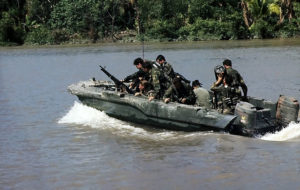
The SEALs, basically Marine Commandos (USM Sea, Air, and Land) for special operations were created in 1963 officially but ad hoc units of marine commandos in the USN already operated in 1944 the ever of landings for covert reconnaissance of landing beaches. They operated sometimes with the related Naval Combat Demolition Units (NCDUs), Rangers, and OSS agents or OSS Maritime agents. In Vietnam, Kennedy soon recoignised of the need for special operatives for and unconventional approach as a measure against guerrilla warfare. The unit was voted by the Congress after Kennedy’s rousing speach about the respect he had for Green Beret and in general special operatives. The first team started training on January 1962 in California, at San Diego and later another unit in Virginia, at Little Creek Base. Basically they were formed after the best UDTs members. They started to arrive in Vietnam in March 1962 as advisors, and really started counter guerilla warfare and clandestine operations from 1963, initially operating in and around Da Nang, and the Mekong delta in general and in the late 1960s and early 1970s made forays into North Vietnam and Laos, and also covertly operated into Cambodia. Nixon’s change of warfare method put an end to these, the last SEAL platoon left Vietnam on 7 December 1971 and the last SEAL advisor in 1973.
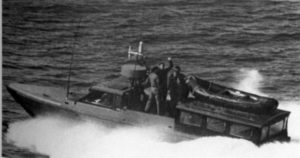
To operate, the SEALs use dat first rather classic rubber boats, painted in matt black and propelled by electric motors for stealth, moving at night.
–The Sea Fox (1965) was the first model. Made in fiberglass, it displaced 9.6 tons light, 11.8 tons fully loaded, for 36 feet long, 10 feet wide and a draft of 2.75 feet.
It was propelled by two silent diesels for 900 bhp, on 2 shafts, and were capable of 32 knots. They normally carried a crew of 3, plus a SEAL team. They had four weapon stations which could vary depending of the mission.
–PTF boats “Nasty” class: PTF3-22, Norwegian design for spec ops. 80 tons, 24.5 x 7.50 x1 .20m, 2 Napier-Deltic diesels 6200 hp, 38 knots 600 nm 25 kts, one 40mm/60 Mk3 Bofors, two 20mm/70 Mk 10, one 81mm/12 M29 mortar or one .5 cal; M2HB. Radar, crew 17. There were also four ‘Ospreys’ (PTF23-26) built by Sewart Seacraft of Berwick in Louisiana. Commercial aluminium hulled design, improved ‘Nasty’ of 100 tons and capable of 40 knots with Napier-Deltic diesels for 6200 hp, configured for spec-ops as torpedo-boats, minelayers, or sub-chasers.
–LCSR: Diving recognition vessels. LSCCs used by SEALs are much lighter.
–MCSS: Medium fire support vessels of the SEALs. 10 built in 1964
–HSSC: Two ships built in 1967 for Seal fire support, based on LCM barges (6).
–PB Mark V Sea Specter: The MkVs were a stealthy version to replace the Seafox, to infiltrate SEAL commandos, carried by a C5 cargo plane and dropped at low altitude. They were the basis for morespecial ships.
After Vietnam, SEALs adopted the PB MkV Sea Specter as well as the CRRC and RHIB: Two types of “zodiac” (inflatable boats) of different size were developed and in the 1980s-90s even more specialized vessels such as the Sea Stalker, and Cyclone (PCC).



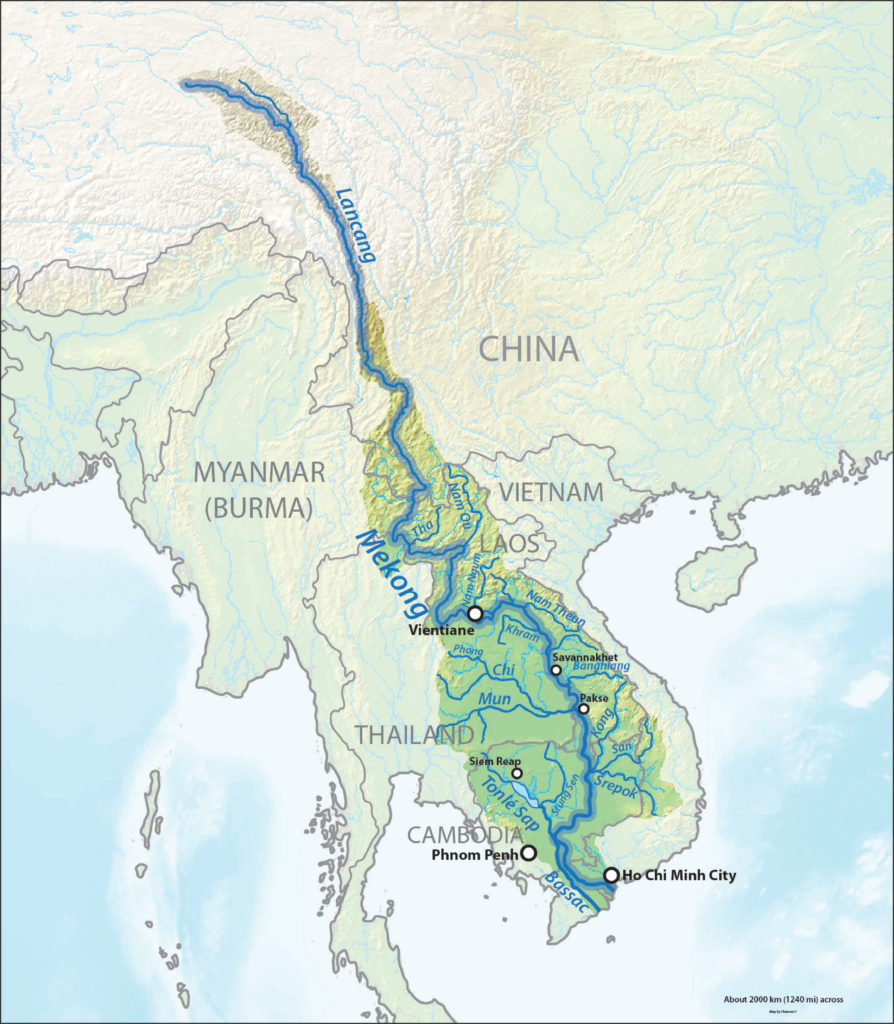
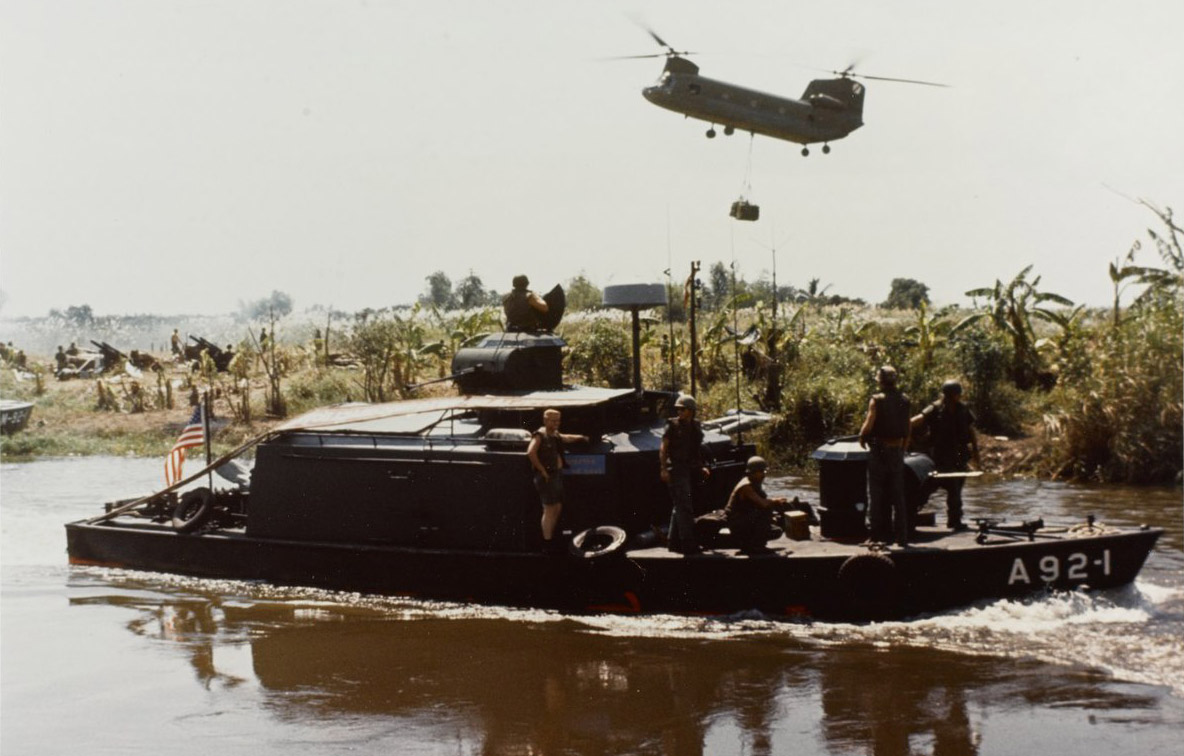
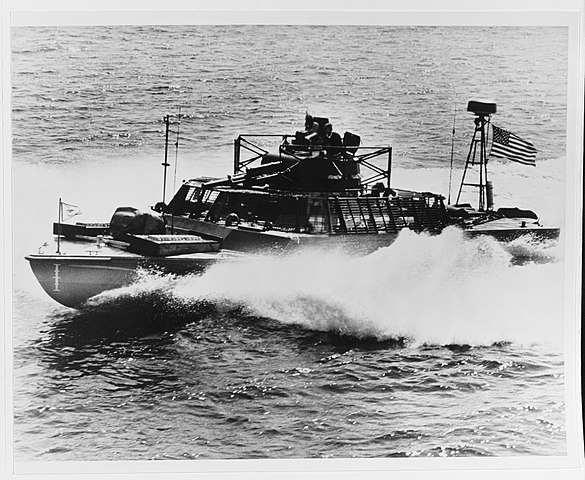

 Latest Facebook Entry -
Latest Facebook Entry -  X(Tweeter) Naval Encyclopedia's deck archive
X(Tweeter) Naval Encyclopedia's deck archive Instagram (@navalencyc)
Instagram (@navalencyc)





 French Navy
French Navy Royal Navy
Royal Navy Russian Navy
Russian Navy Armada Espanola
Armada Espanola Austrian Navy
Austrian Navy K.u.K. Kriegsmarine
K.u.K. Kriegsmarine Dansk Marine
Dansk Marine Nautiko Hellenon
Nautiko Hellenon Koninklije Marine 1870
Koninklije Marine 1870 Marinha do Brasil
Marinha do Brasil Osmanlı Donanması
Osmanlı Donanması Marina Do Peru
Marina Do Peru Marinha do Portugal
Marinha do Portugal Regia Marina 1870
Regia Marina 1870 Nihhon Kaigun 1870
Nihhon Kaigun 1870 Preußische Marine 1870
Preußische Marine 1870 Russkiy Flot 1870
Russkiy Flot 1870 Svenska marinen
Svenska marinen Søværnet
Søværnet Union Navy
Union Navy Confederate Navy
Confederate Navy Armada de Argentina
Armada de Argentina Imperial Chinese Navy
Imperial Chinese Navy Marinha do Portugal
Marinha do Portugal Mexico
Mexico Kaiserliche Marine
Kaiserliche Marine 1898 US Navy
1898 US Navy Sovietskiy Flot
Sovietskiy Flot Royal Canadian Navy
Royal Canadian Navy Royal Australian Navy
Royal Australian Navy RNZN Fleet
RNZN Fleet Chinese Navy 1937
Chinese Navy 1937 Kriegsmarine
Kriegsmarine Chilean Navy
Chilean Navy Danish Navy
Danish Navy Finnish Navy
Finnish Navy Hellenic Navy
Hellenic Navy Polish Navy
Polish Navy Romanian Navy
Romanian Navy Turkish Navy
Turkish Navy Royal Yugoslav Navy
Royal Yugoslav Navy Royal Thai Navy
Royal Thai Navy Minor Navies
Minor Navies Albania
Albania Austria
Austria Belgium
Belgium Columbia
Columbia Costa Rica
Costa Rica Cuba
Cuba Czechoslovakia
Czechoslovakia Dominican Republic
Dominican Republic Haiti
Haiti Hungary
Hungary Honduras
Honduras Estonia
Estonia Iceland
Iceland Eire
Eire Equador
Equador Iran
Iran Iraq
Iraq Latvia
Latvia Liberia
Liberia Lithuania
Lithuania Mandchukuo
Mandchukuo Morocco
Morocco Nicaragua
Nicaragua Persia
Persia San Salvador
San Salvador Sarawak
Sarawak Uruguay
Uruguay Venezuela
Venezuela Zanzibar
Zanzibar Warsaw Pact Navies
Warsaw Pact Navies Bulgaria
Bulgaria Hungary
Hungary

 Bundesmarine
Bundesmarine Dutch Navy
Dutch Navy Hellenic Navy
Hellenic Navy Marina Militare
Marina Militare Yugoslav Navy
Yugoslav Navy Chinese Navy
Chinese Navy Indian Navy
Indian Navy Indonesian Navy
Indonesian Navy JMSDF
JMSDF North Korean Navy
North Korean Navy Pakistani Navy
Pakistani Navy Philippines Navy
Philippines Navy ROKN
ROKN Rep. of Singapore Navy
Rep. of Singapore Navy Taiwanese Navy
Taiwanese Navy IDF Navy
IDF Navy Saudi Navy
Saudi Navy Royal New Zealand Navy
Royal New Zealand Navy Egyptian Navy
Egyptian Navy South African Navy
South African Navy






























 Ukrainian Navy
Ukrainian Navy dbodesign
dbodesign